DETAIL of Antonio Canova. The Three Graces, 1812, terracotta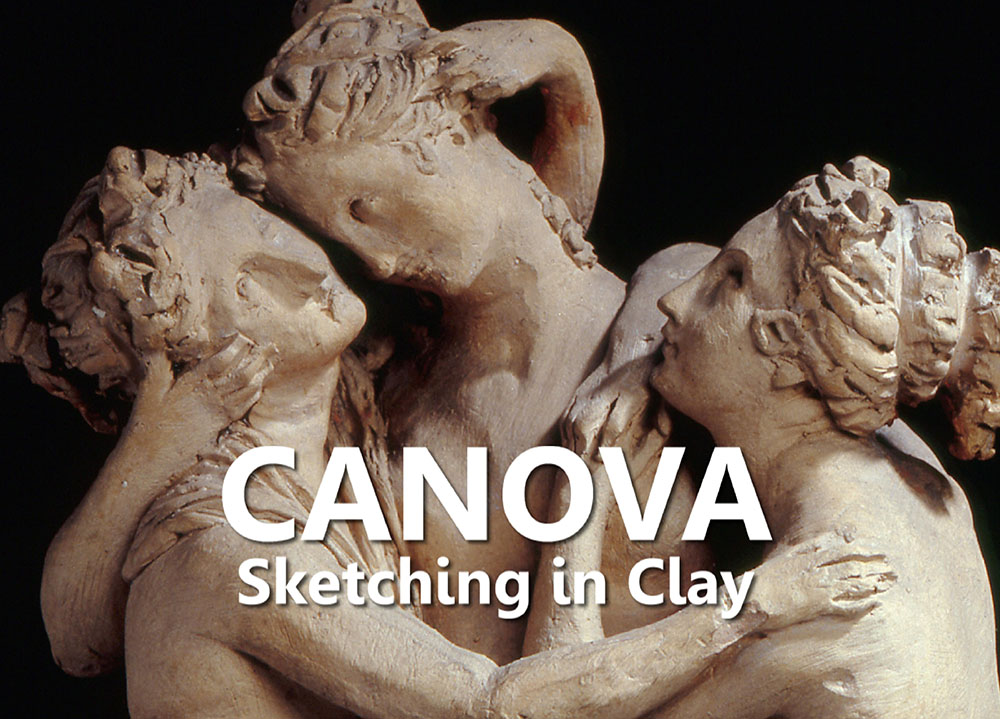 NATIONAL GALLERY OF ART
NATIONAL GALLERY OF ART
from June 11 through October 9, 2023
and at the Art Institute of Chicago
from November 19, 2023, through March 18, 2024.
The exhibition explores Canova’s process detailing how he designed in clay
and how he moved from sketch to finished statue
 Celebrated for sensual marble sculptures that represented a new approach to classical idealism, Antonio Canova (1757–1822) was the preeminent European artist of his time.
Celebrated for sensual marble sculptures that represented a new approach to classical idealism, Antonio Canova (1757–1822) was the preeminent European artist of his time.
He used clay in a variety of ways: to explore his ideas in three dimensions; to present his designs to patrons in the form of more finished models; to create larger models that helped him refine the details of his designs; and to produce the final full-scale models that were then cast in plaster.
Antonio Canova
Selfportrait, 1792
Canova’s phenomenal skill as a modeler
Marked with rapid impressions from his fingers and tools, his models are
completely different in character from his marbles, which are finished
to a perfection that hides all trace of the artist’s hand.
MYTHS AND LEGENDS
“Adam and Eve Mourning the Dead Abel”
Antonio Canova, c. 1818–1822, terracotta, overall: 22 x 30 x 18 cm (8 11/16 x 11 13/16 x 7 1/16 in.)
Museo Gypsotheca Antonio Canova, Possagno. Photographed by Luigi Spina
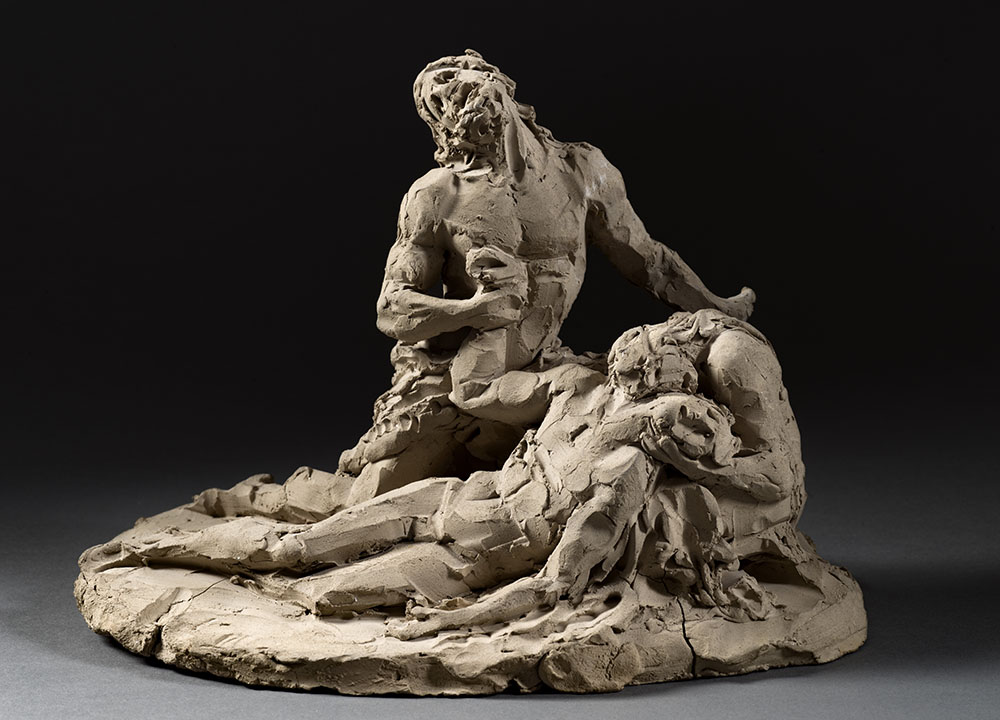
Detail of “Adam and Eve Mourning the Dead Abel”
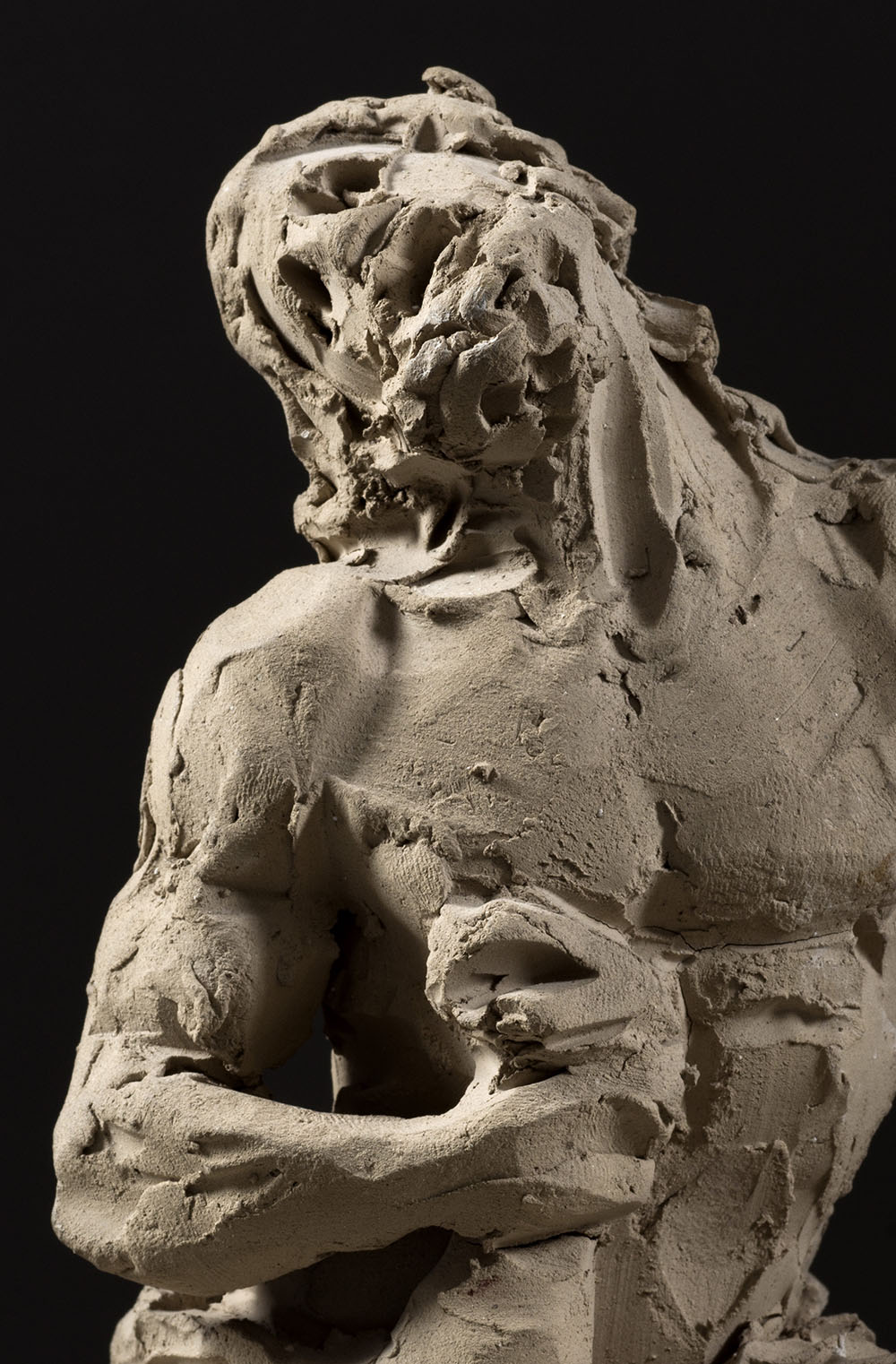
Detail of “Adam and Eve Mourning the Dead Abel”
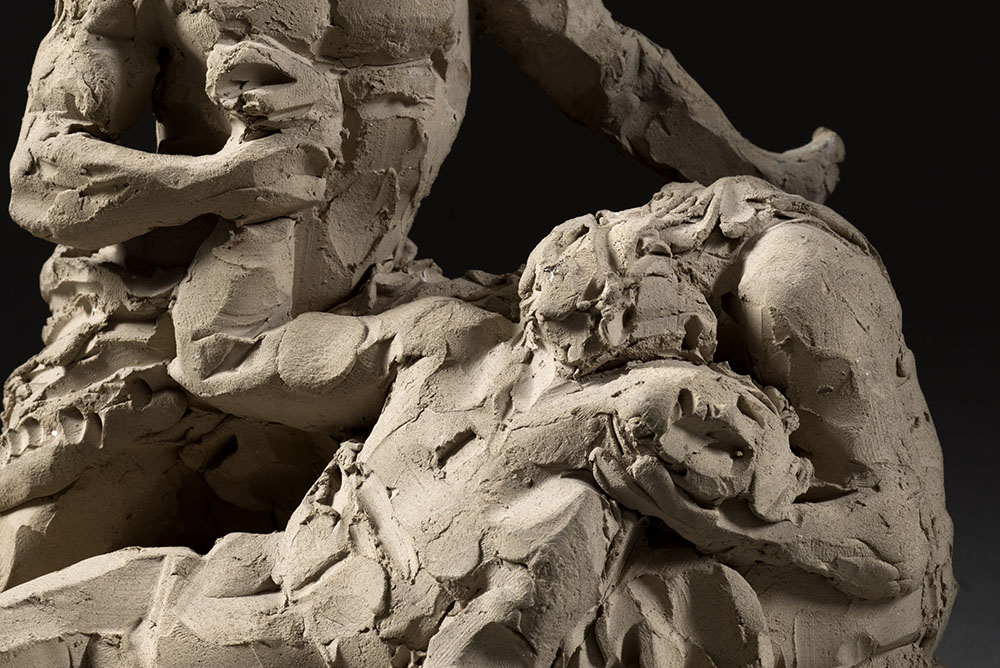
“The Three Graces”
Antonio Canova, 1812, terracotta, overall: 43 x 24.3 x 17 cm (16 15/16 x 9 9/16 x 6 11/16 in.)
Musée des Beaux-Arts de Lyon, Bequest of Juliette Récamier, 1849.
Image © Lyon MBA – Photo Martial Couderette
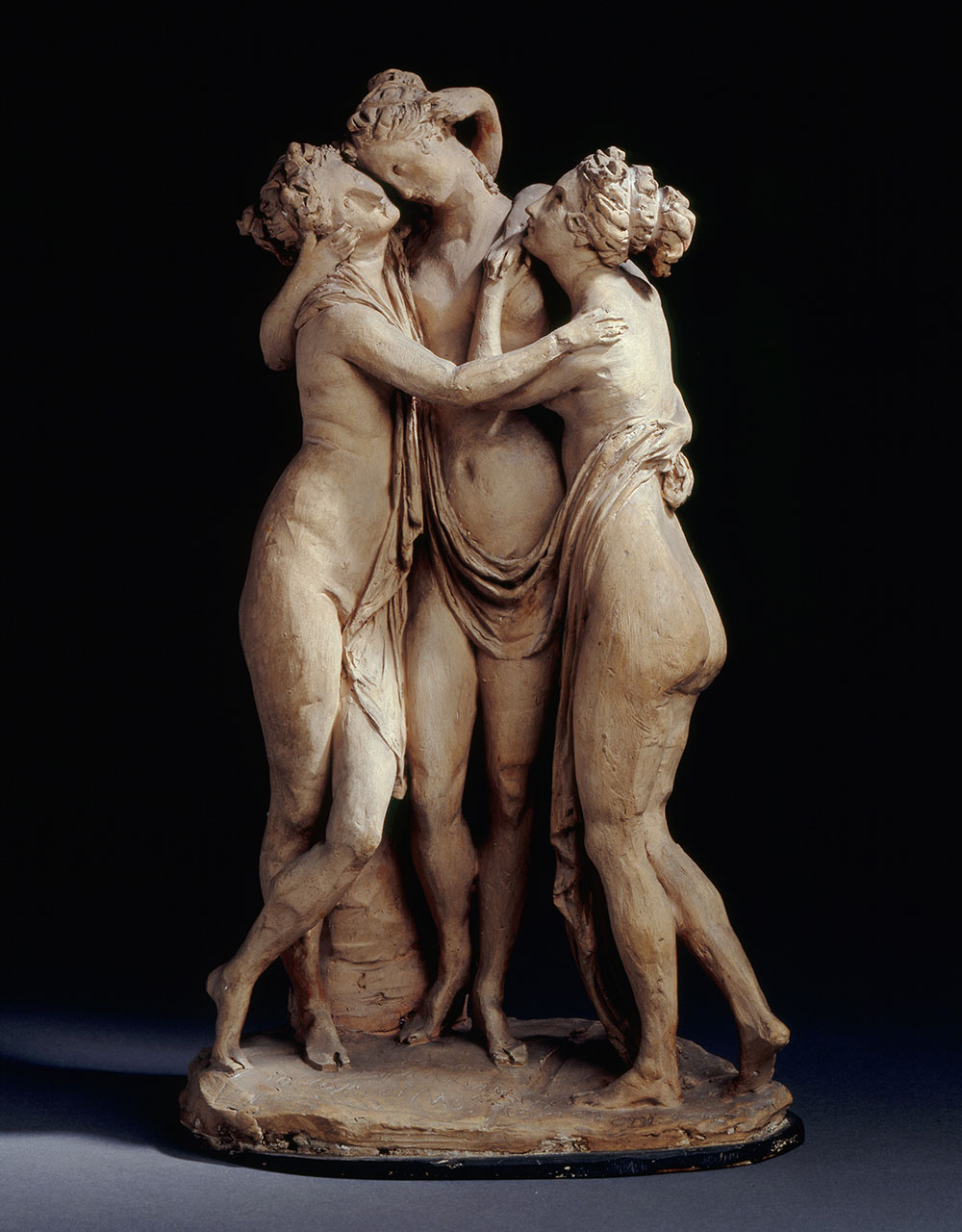
Detail of “The Three Graces”
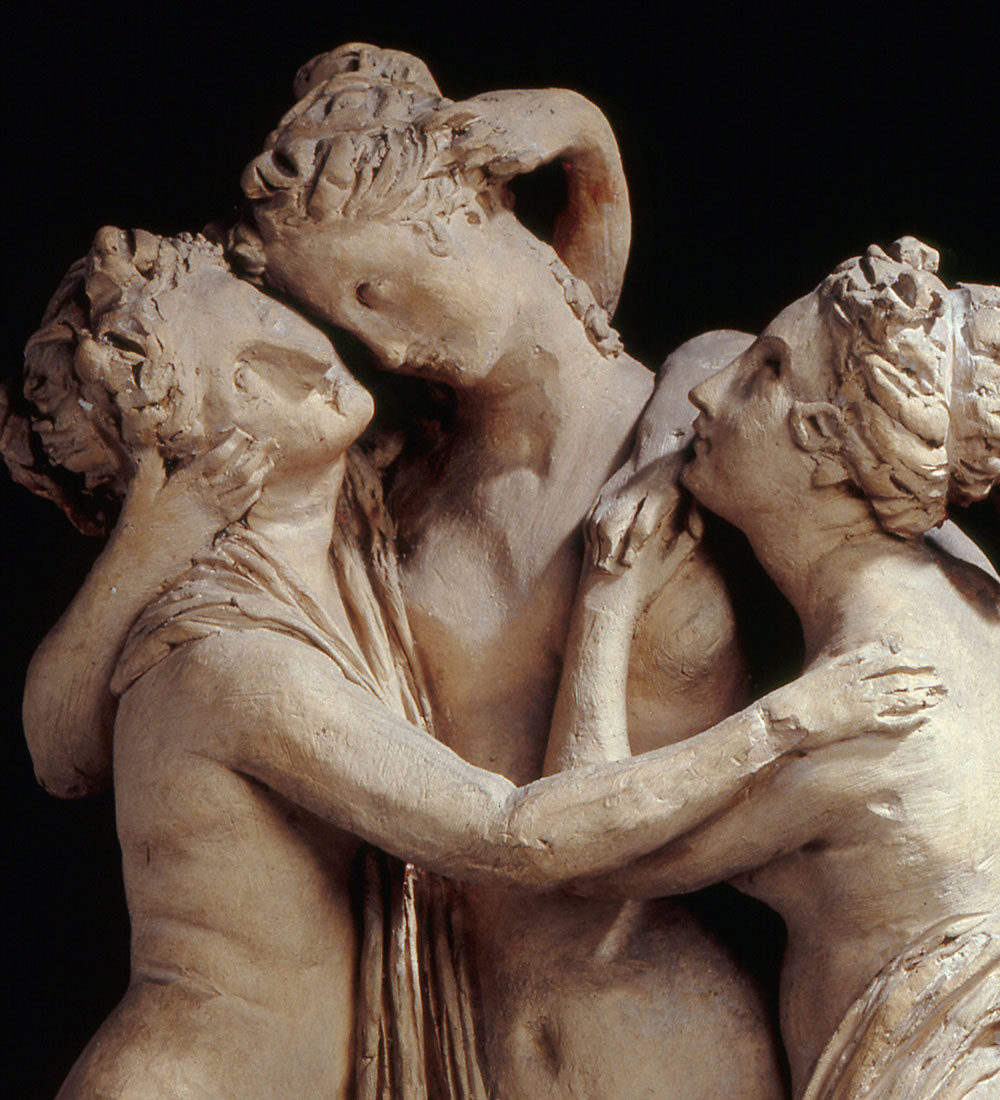
The Three Graces carved in marble
Antonio Canova, 1813–1816
The State Hermitage Museum, Saint Petersburg
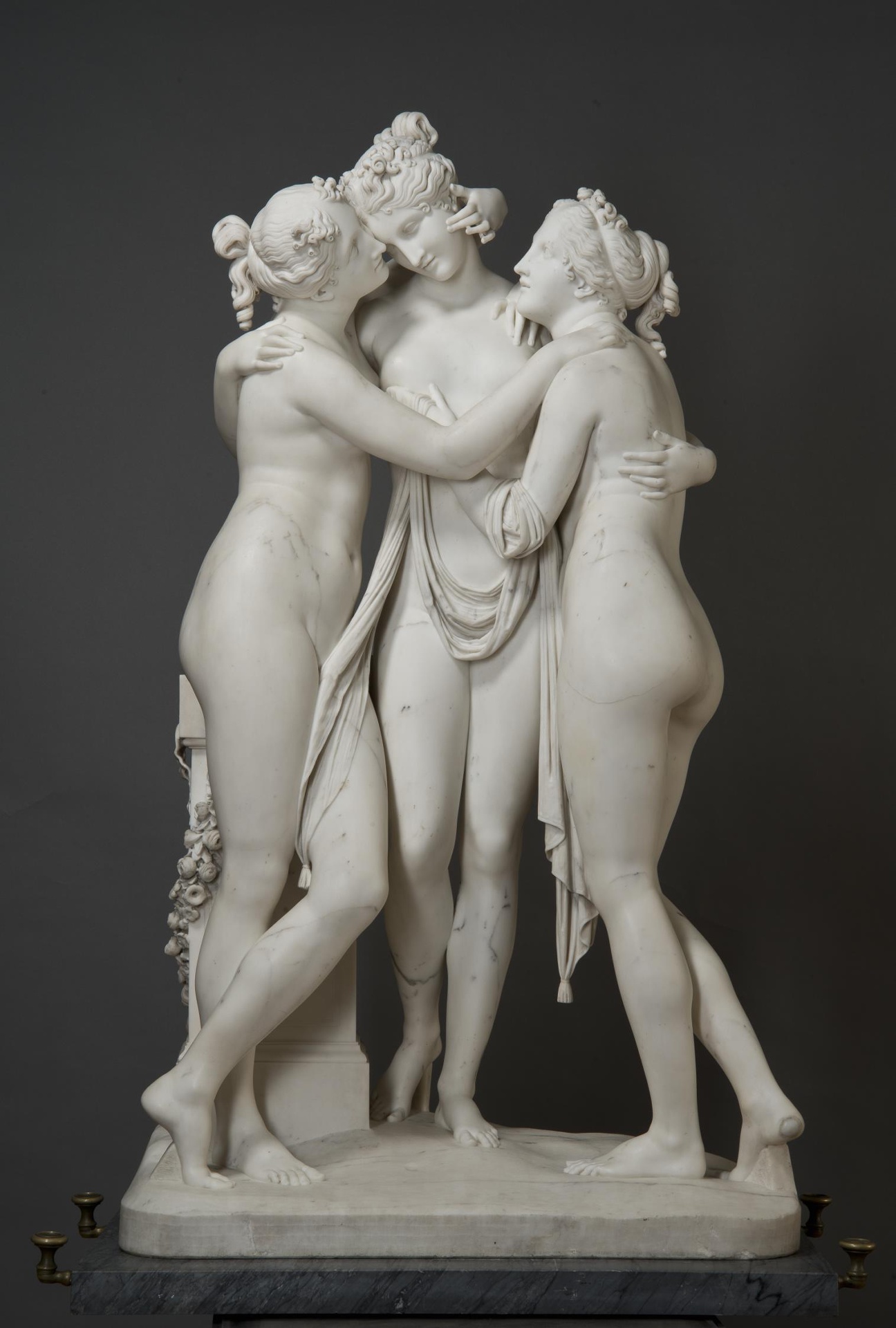
“Pyrrhus Sacrificing Polyxena”
Antonio Canova, c. 1798–1799, terracotta, overall: 28 x 15 x 14 cm (11 x 5 7/8 x 5 1/2 in.)
Museo Gypsotheca Antonio Canova, Possagno. Photographed by Luigi Spina
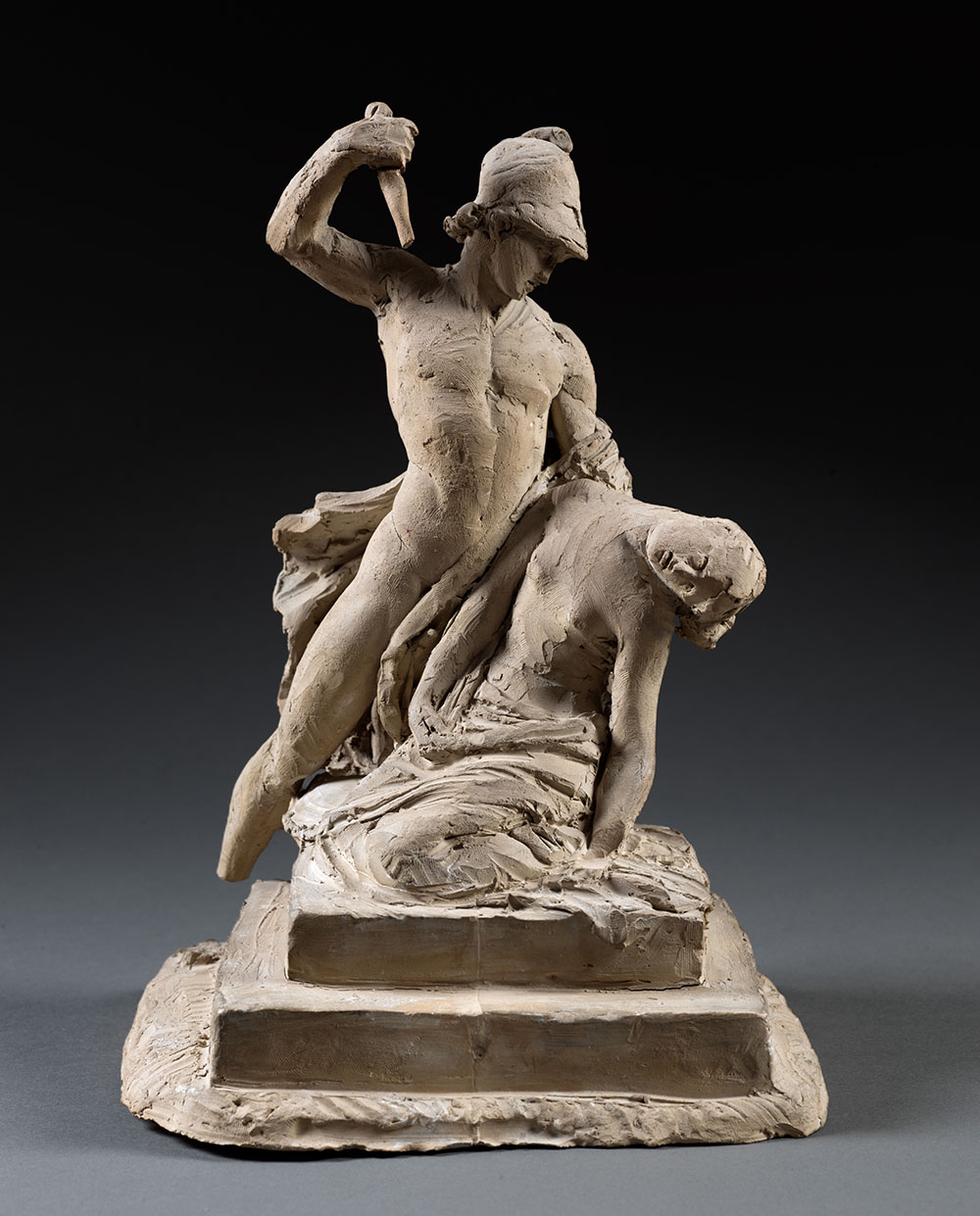
Detail of “Pyrrhus Sacrificing Polyxena”
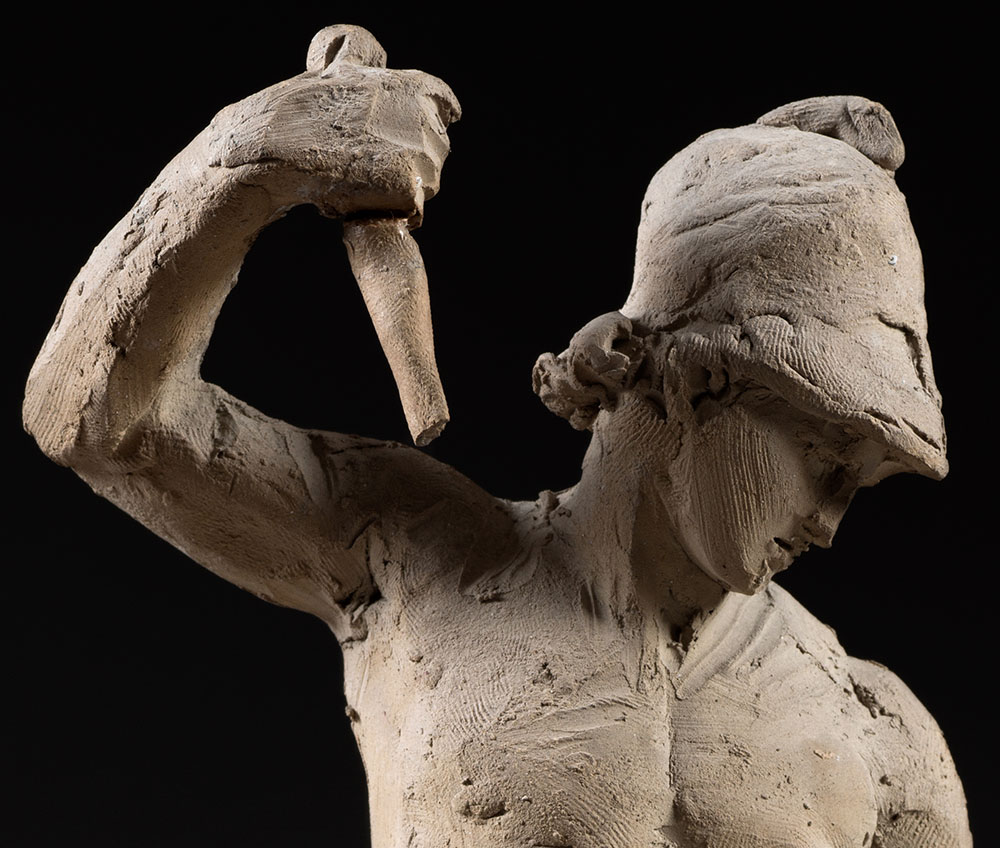
“Satyr and a Nymph” (Cupid and Psyche?)
Antonio Canova, c.1786–1787, terracotta, overall: 16 x 29 x 14 cm (6 5/16 x 11 7/16 x 5 1/2 in.)
Museo Gypsotheca Antonio Canova, Possagno, Photographed by Luigi Spina
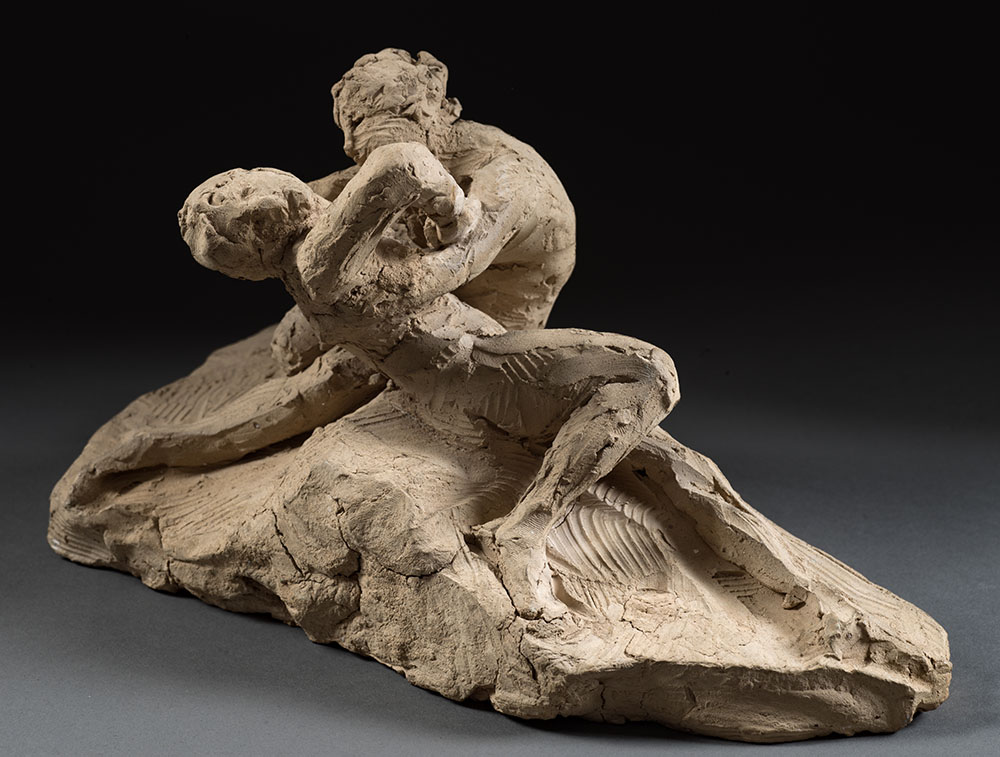
“Hebe”
Antonio Canova. c.1816, terracotta, overall: 51.5 x 27 x 21 cm (20 1/4 x 10 5/8 x 8 1/4 in.)
Private collection, Courtesy of the Daniel Katz Gallery, London
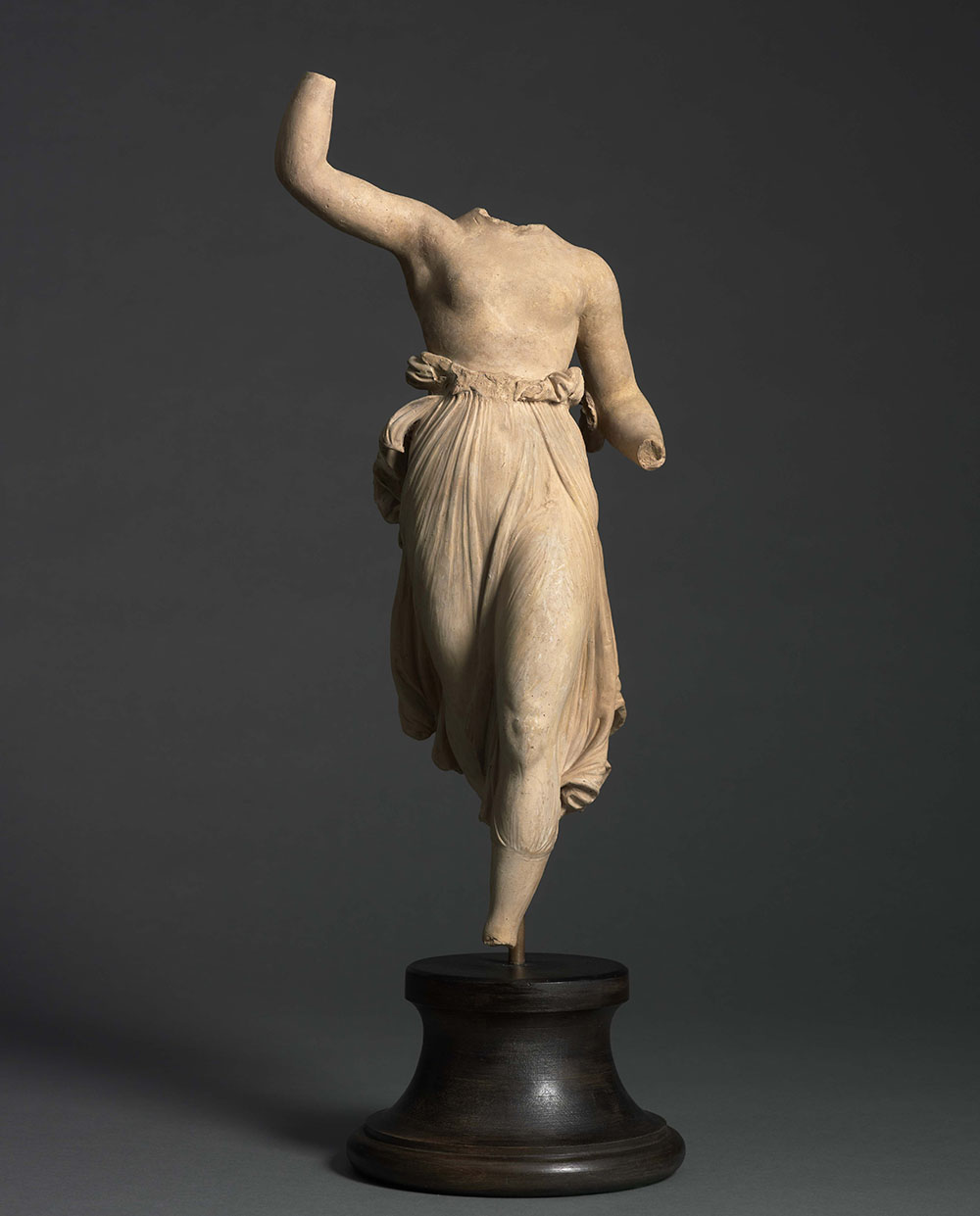
FAITH AND MONUMENTS
“Immaculate Virgin”
Antonio Canova, c.1818–1822, terracotta, overall: 48 x 15 x 18 cm (18 7/8 x 5 7/8 x 7 1/16 in.)
Museo Gypsotheca Antonio Canova, Possagno. Photographed by Luigi Spina
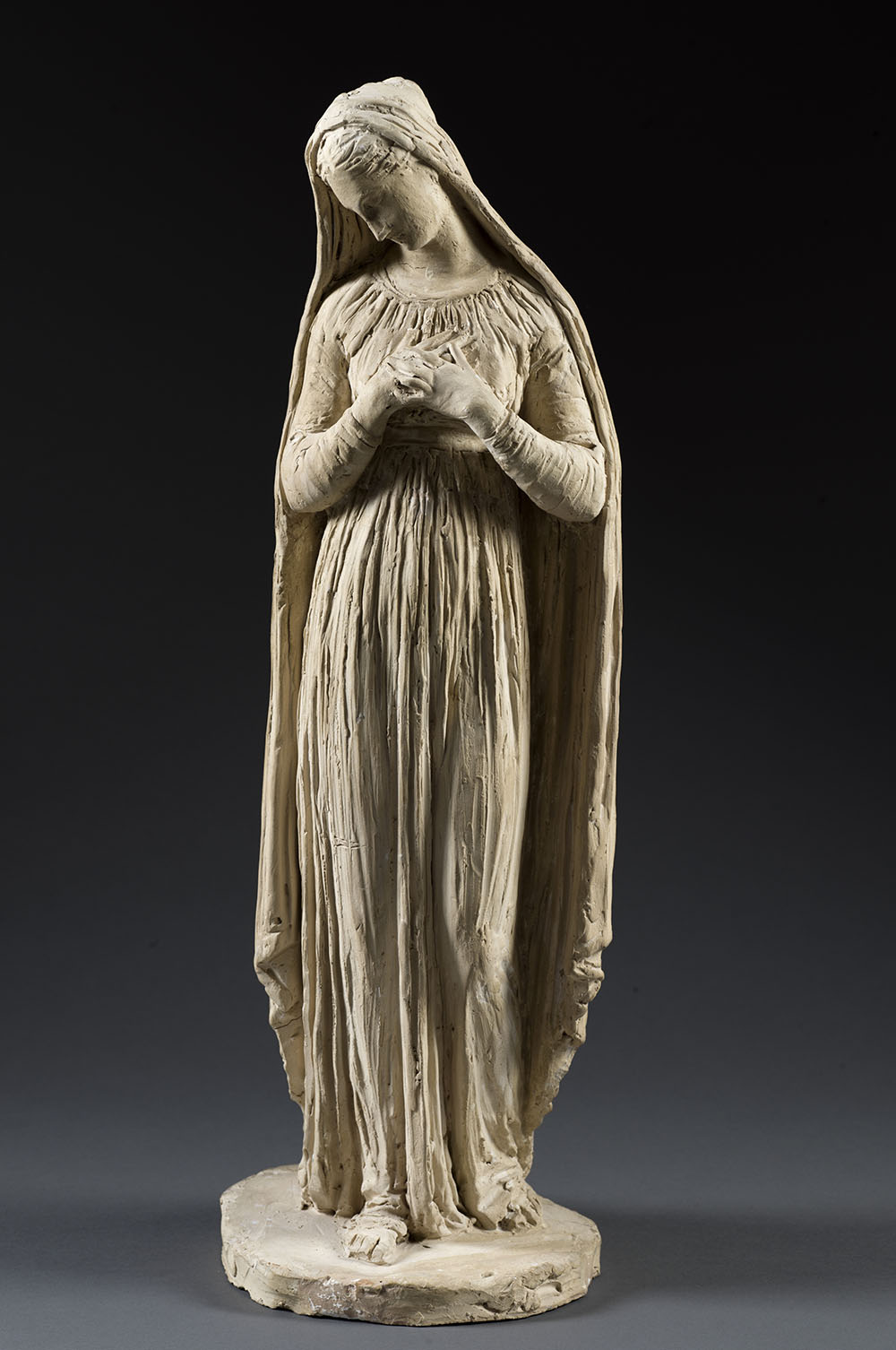
Detail of “Immaculate Virgin”
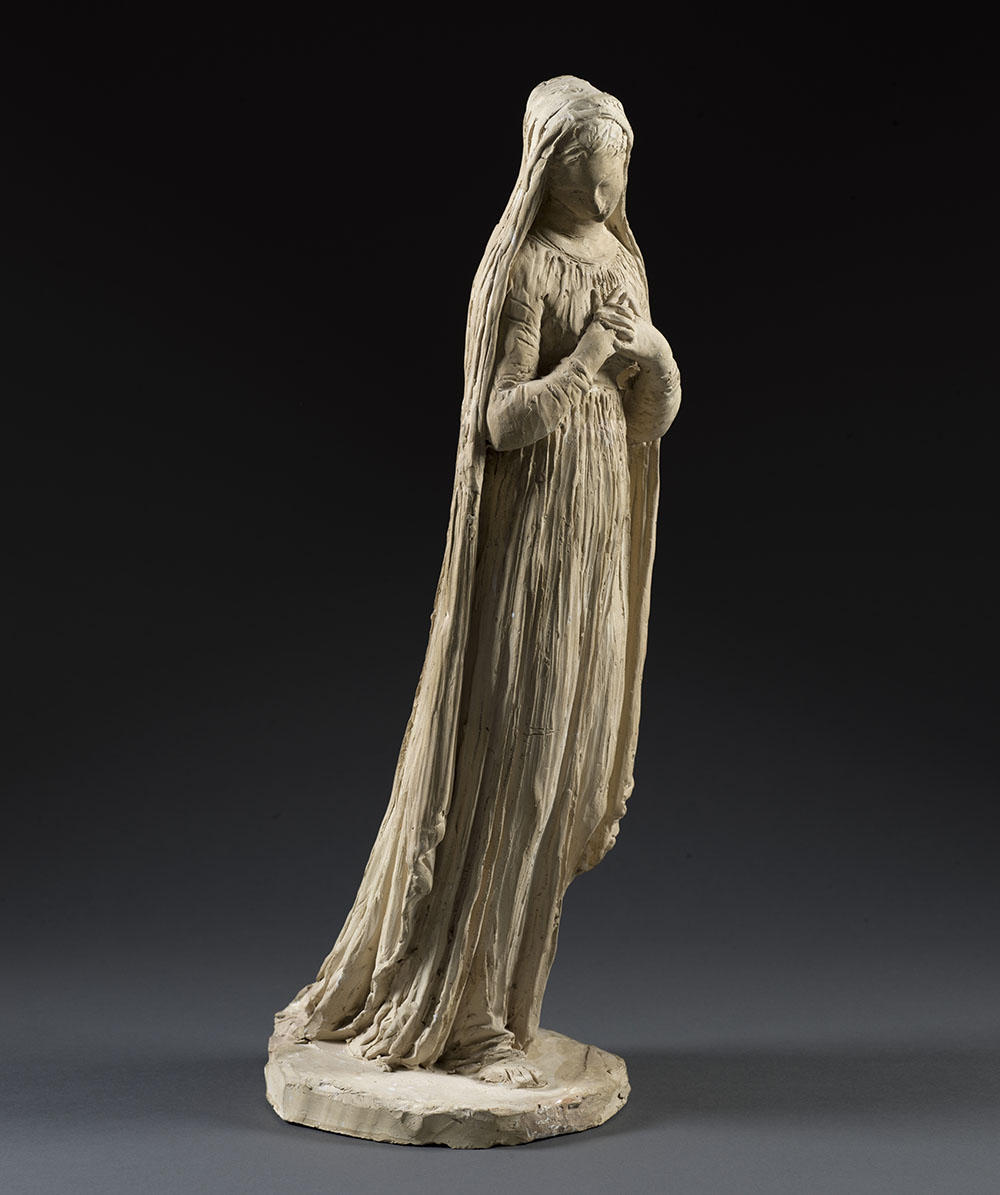
“Piety”
Antonio Canova, 1783, terracotta, overall: 38.5 x 11.5 x 10 cm (15 3/16 x 4 1/2 x 3 15/16 in.)
Private collection. Photographed by Prudence Cuming Fine Art Photography
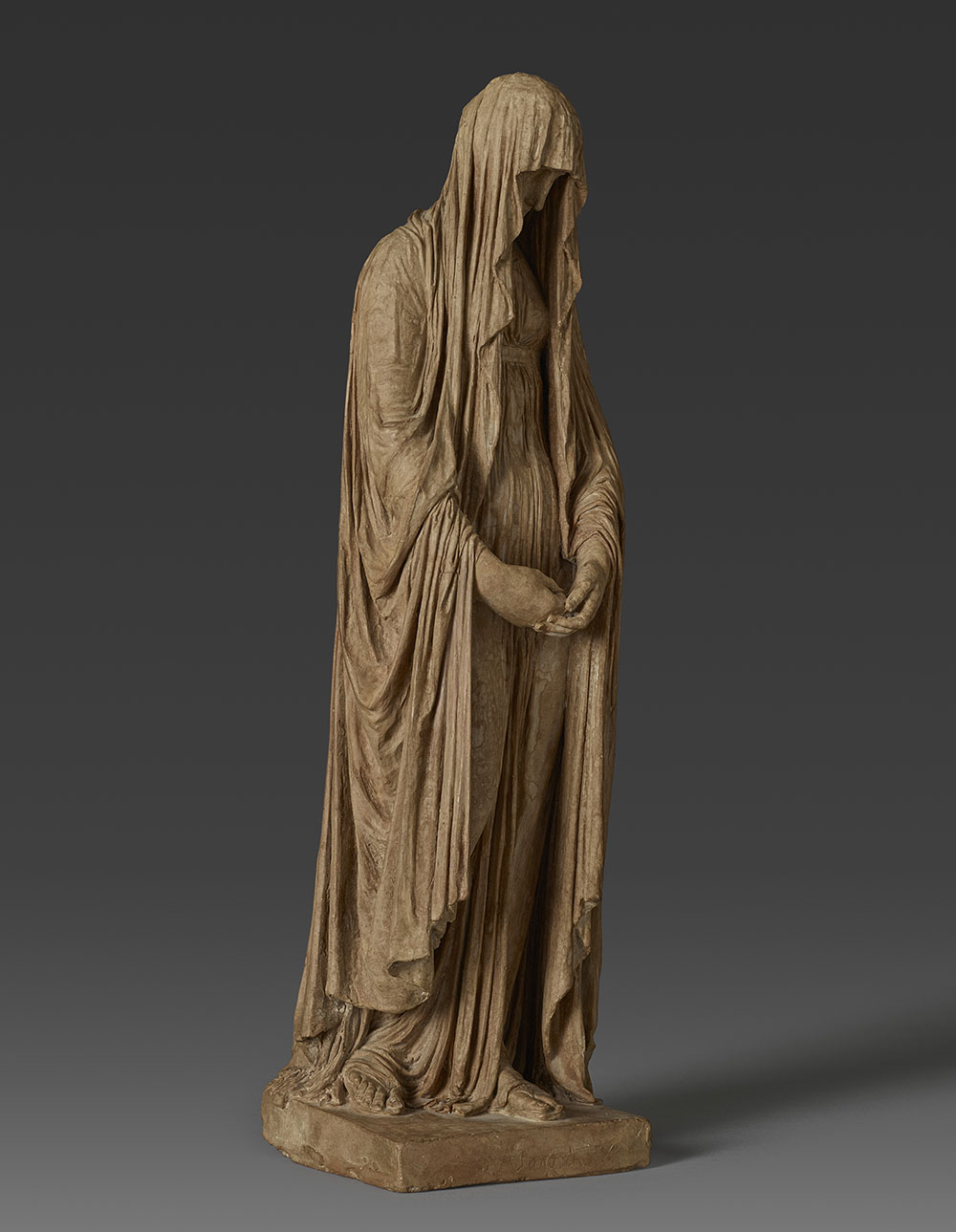
Details of “Piety”
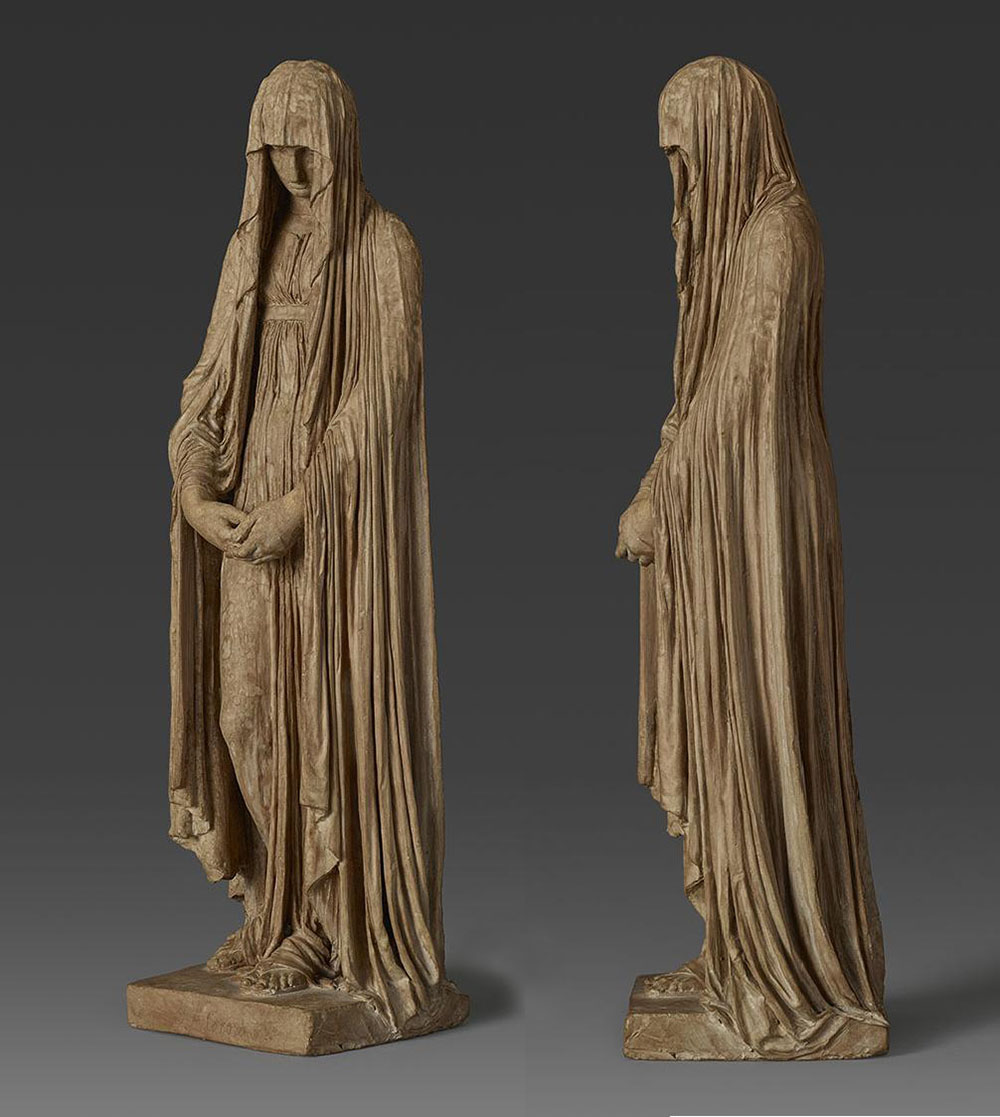
“Humility”
Antonio Canova, 1783, terracotta, overall: 13 x 11 x 9 cm (5 1/8 x 4 5/16 x 3 9/16 in.)
Museo Gypsotheca Antonio Canova, Possagno. Photographed by Luigi Spina
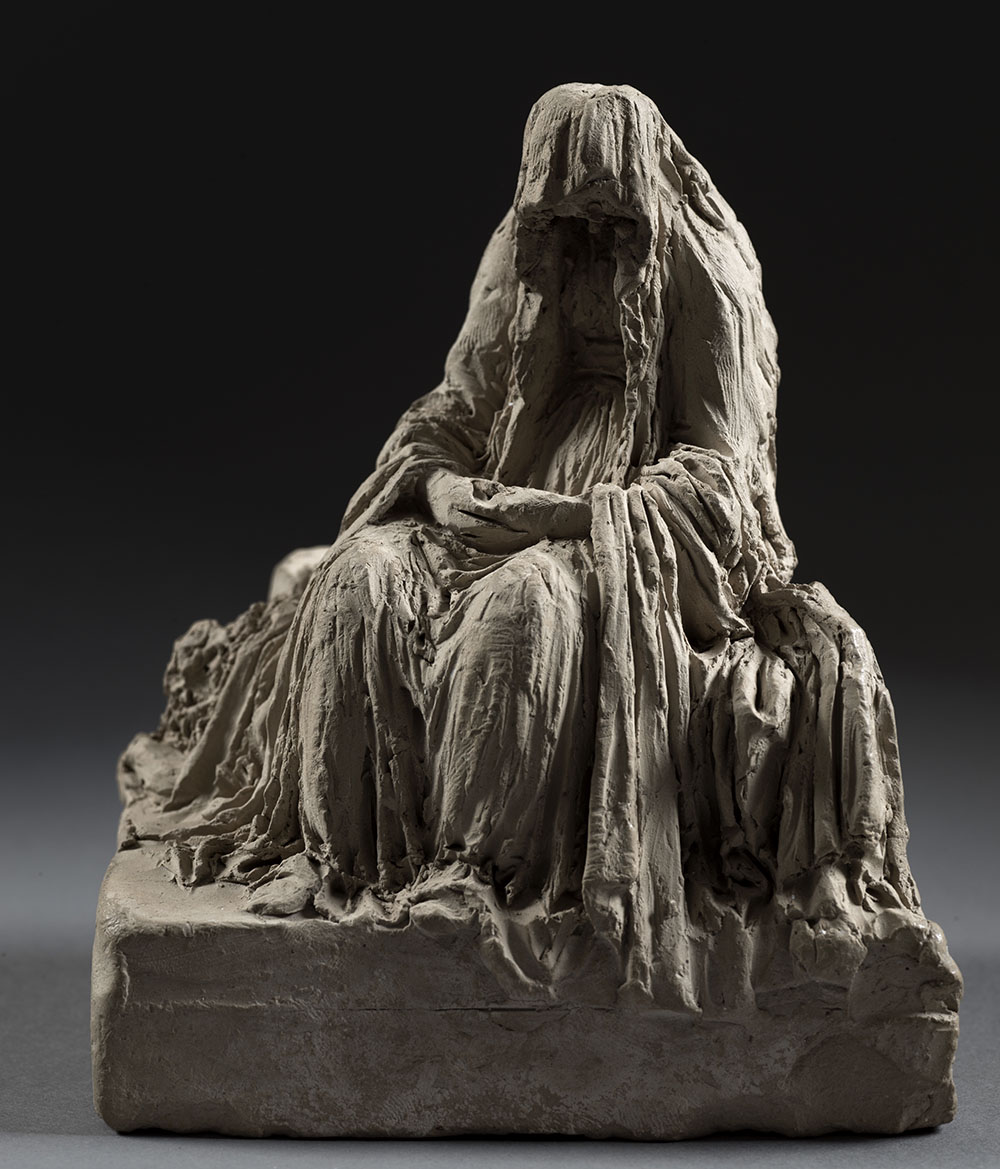
CREATION PROCESS
Canova made increasingly larger models that were cast in plaster. Assistants used
the pointing system to copy plaster into marble, which Canova then finished.
“Penitent Magdalen”
Antonio Canova,1791, terracotta, overall: 15 x 13 x 14.5 cm (5 7/8 x 5 1/8 x 5 11/16 in.)
Musei Civici, Bassano del Grappa. Photographed by Luigi Spina
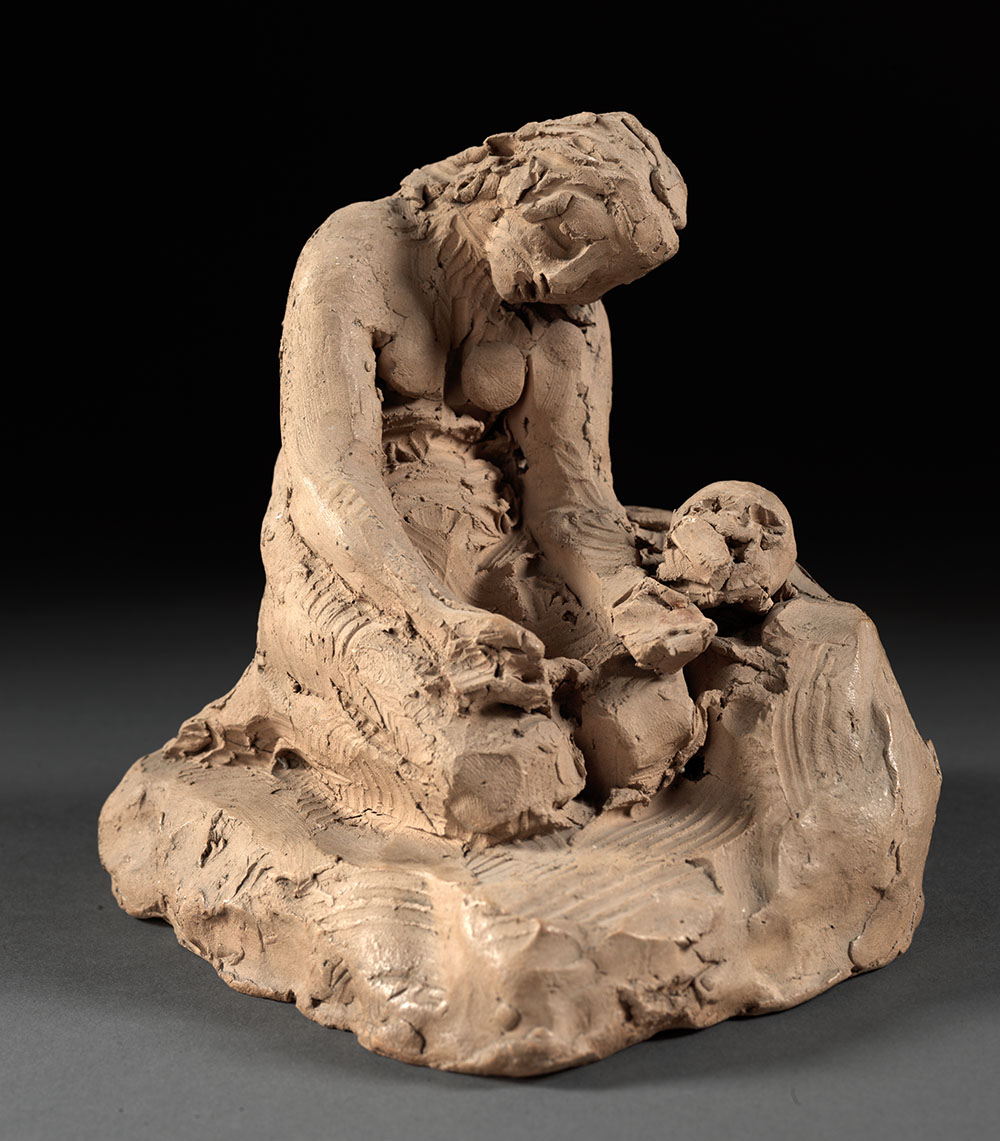
“Penitent Magdalene”
Head
Antonio Canova, c.1794–1809, plaster with pointing marks,
overall: 45 x 40 x 41 cm (17 11/16 x 15 3/4 x 16 1/8 in.)
Museo Gypsotheca Antonio Canova, Possagno. Photographed by Luigi Spina
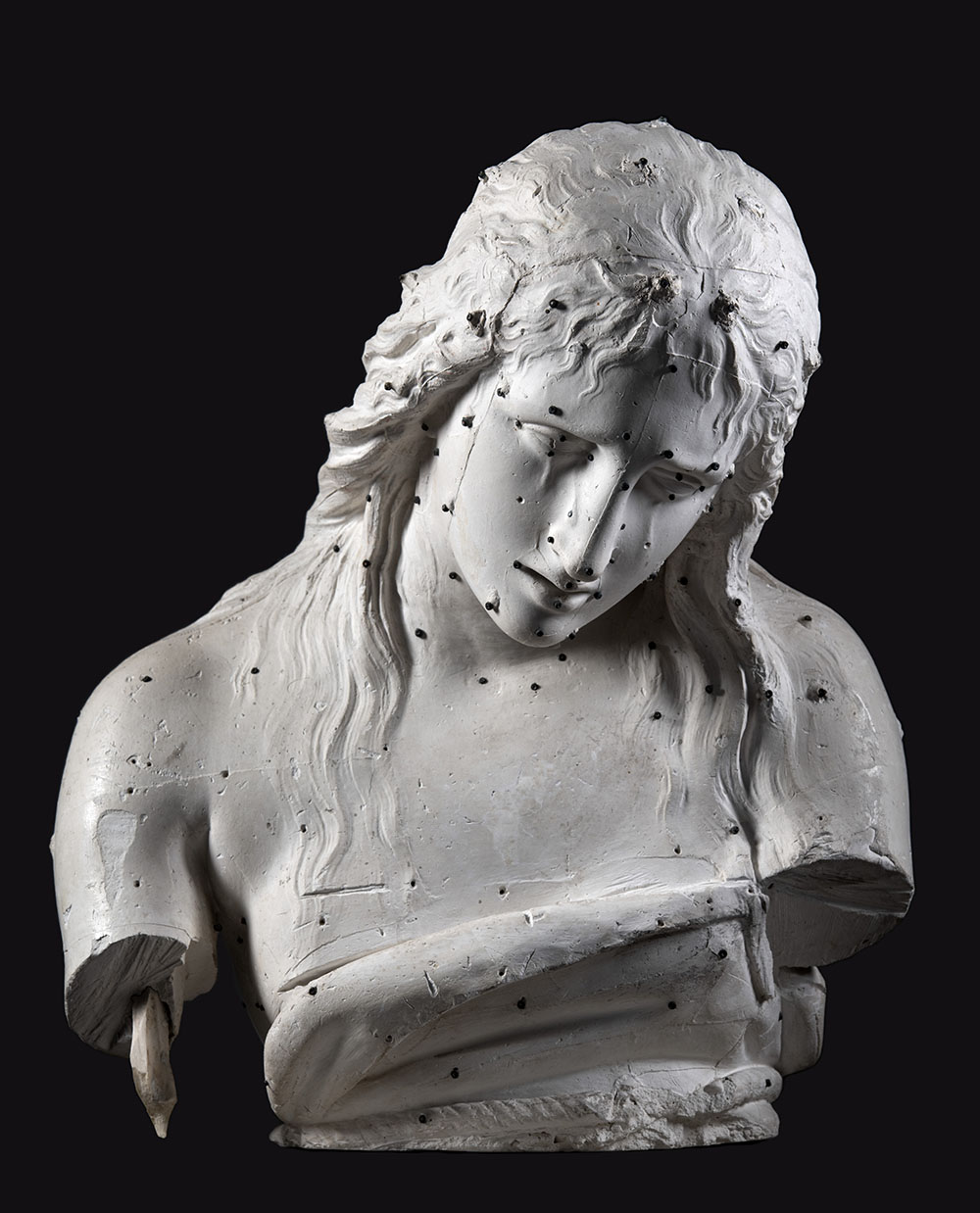
“Penitent Magdalen”
Antonio Canova, c.1794–1796, marble and gilded bronze, overall: 95 x 70 x 77 cm
(37 3/8 x 27 9/16 x 30 5/16 in.) Musei di Strada Nuova, Genoa © Musei di Strada Nuova
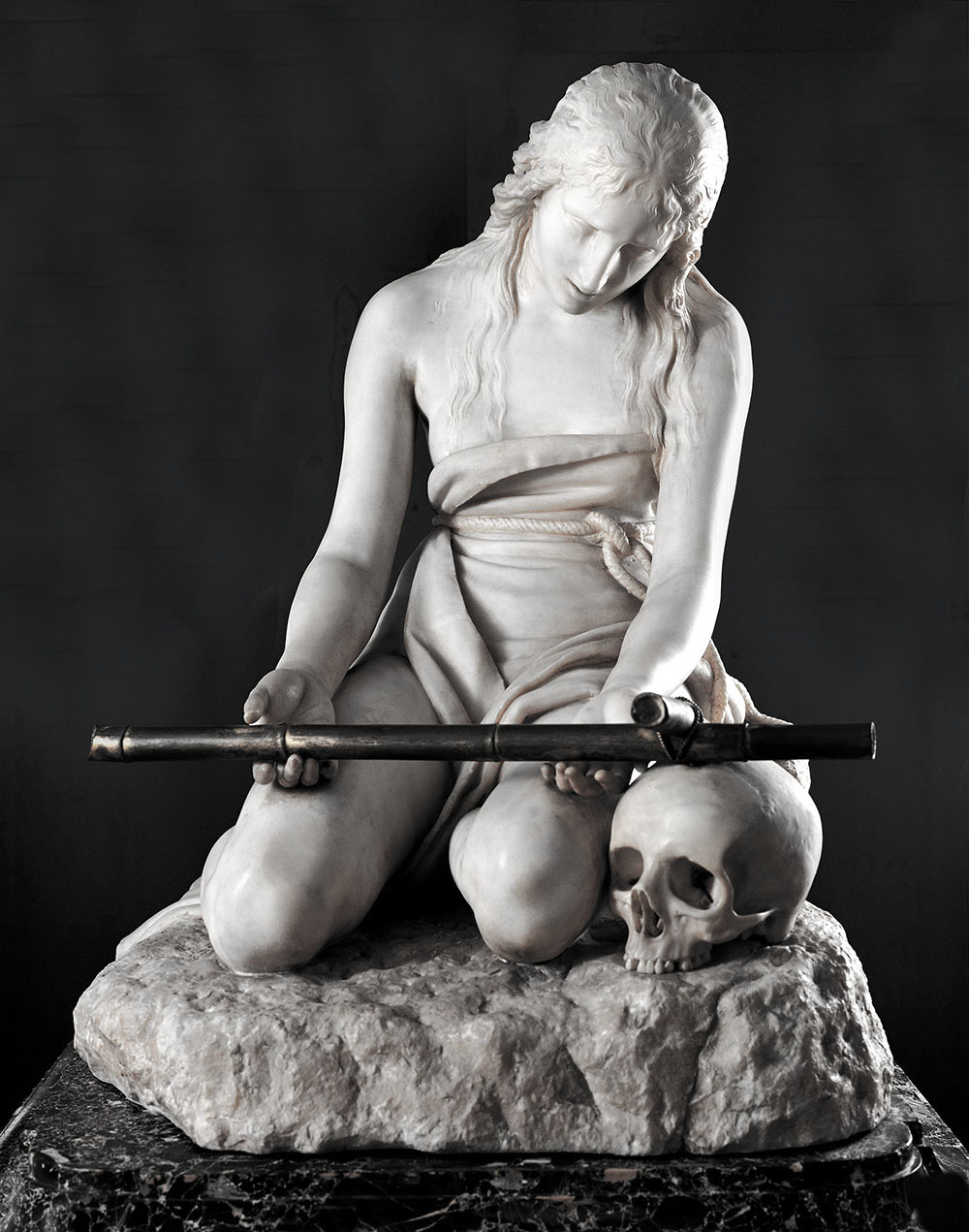
CREATION PROCESS
“Religion”
Antonio Canova, c. 1786–1787, terracotta and wood, without cross: 53 x 35 x 26 cm
(20 7/8 x 13 3/4 x 10 1/4 in.) cross: 62 x 22 x 0.5 cm (24 7/16 x 8 11/16 x 3/16 in.)
Galleria dell’Accademia Tadini, Lovere © Fondazione Accademia di belle arti Tadini ONLUS,
Archivio Fotografico, Photographed by Luigi Spina 2022
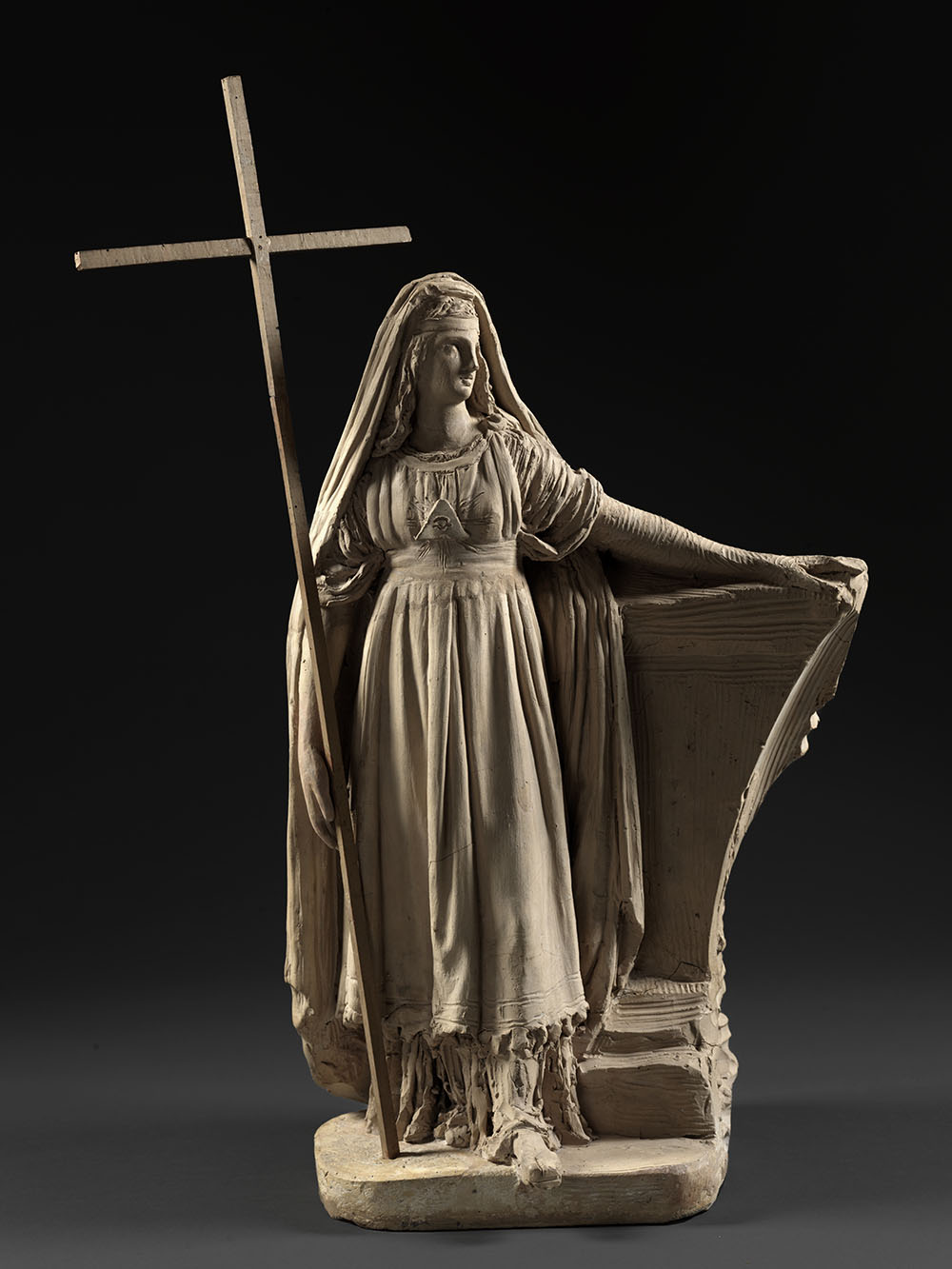
CREATION PROCESS
“Religion”
Head
Antonio Canova, c.1787–1788, plaster, overall: 115 x 108 x 45 cm (45 1/4 x 42 1/2 x 17 11/16 in.)
Museo Gypsotheca Antonio Canova, Possagno. Photographed by Luigi Spina
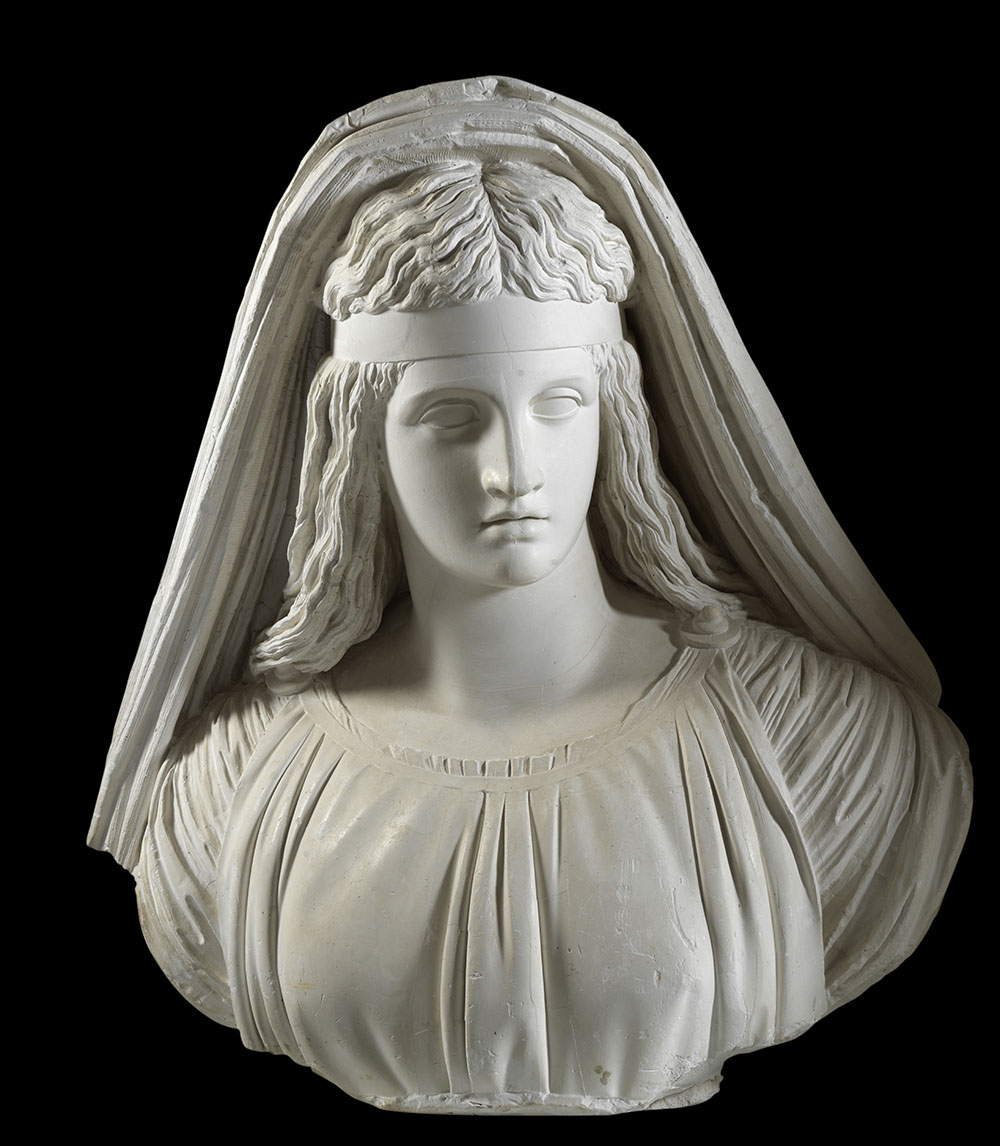
CREATION PROCESS
“Madame Mère”
(Letizia Ramolino Bonaparte)
Antonio Canova, c.1804–1805, terracotta, overall: 32 x 26 x 15.5 cm (12 5/8 x 10 1/4 x 6 1/8 in.)
Fondazione Querini Stampalia, Venice. hotographed by Luigi Spina
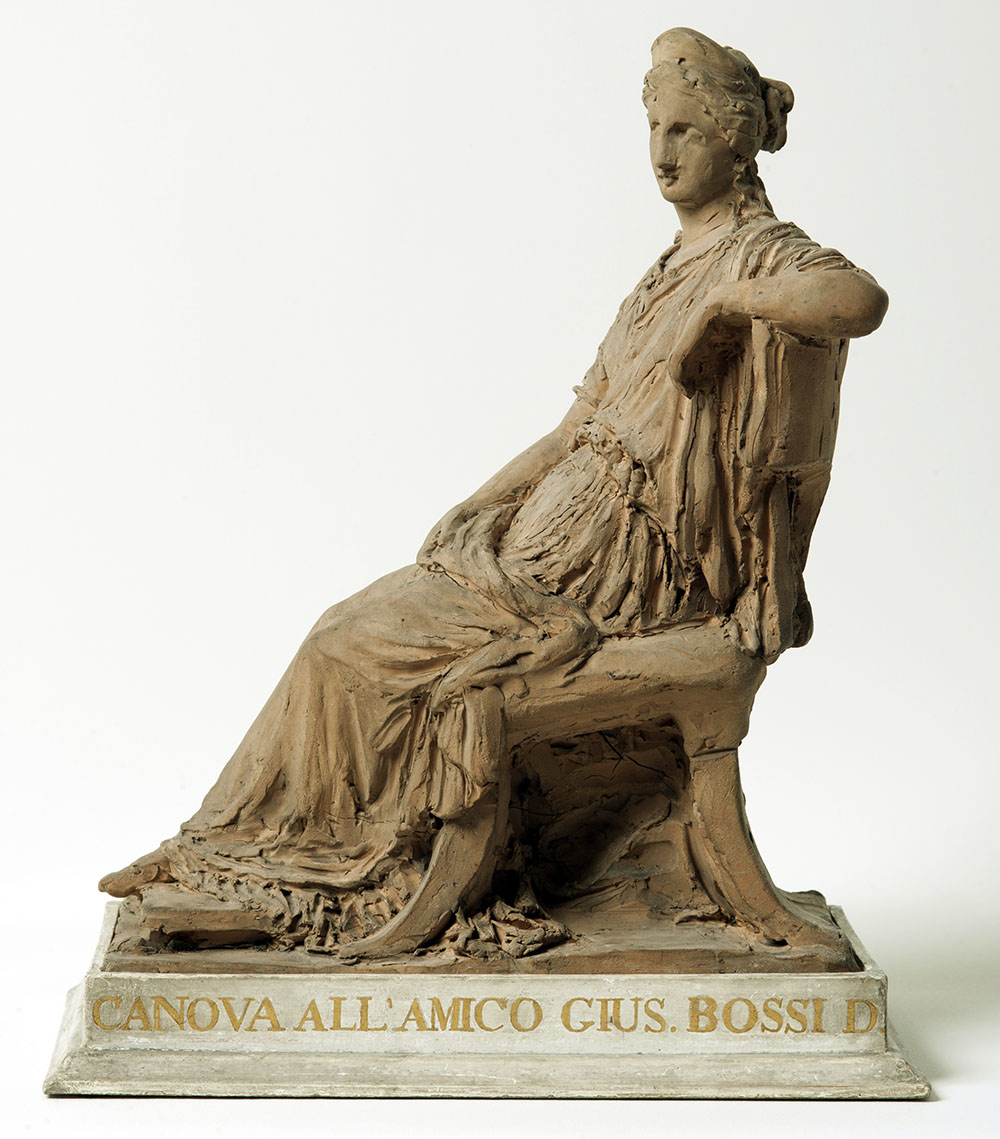
“Madame Mère”
(Letizia Ramolino Bonaparte)
Antonio Canova, c.1805, plaster, overall: 67 x 61 x 35 cm (26 3/8 x 24 x 13 3/4 in.)
Museo Gypsotheca Antonio Canova, Possagno. Photographed by Luigi Spina
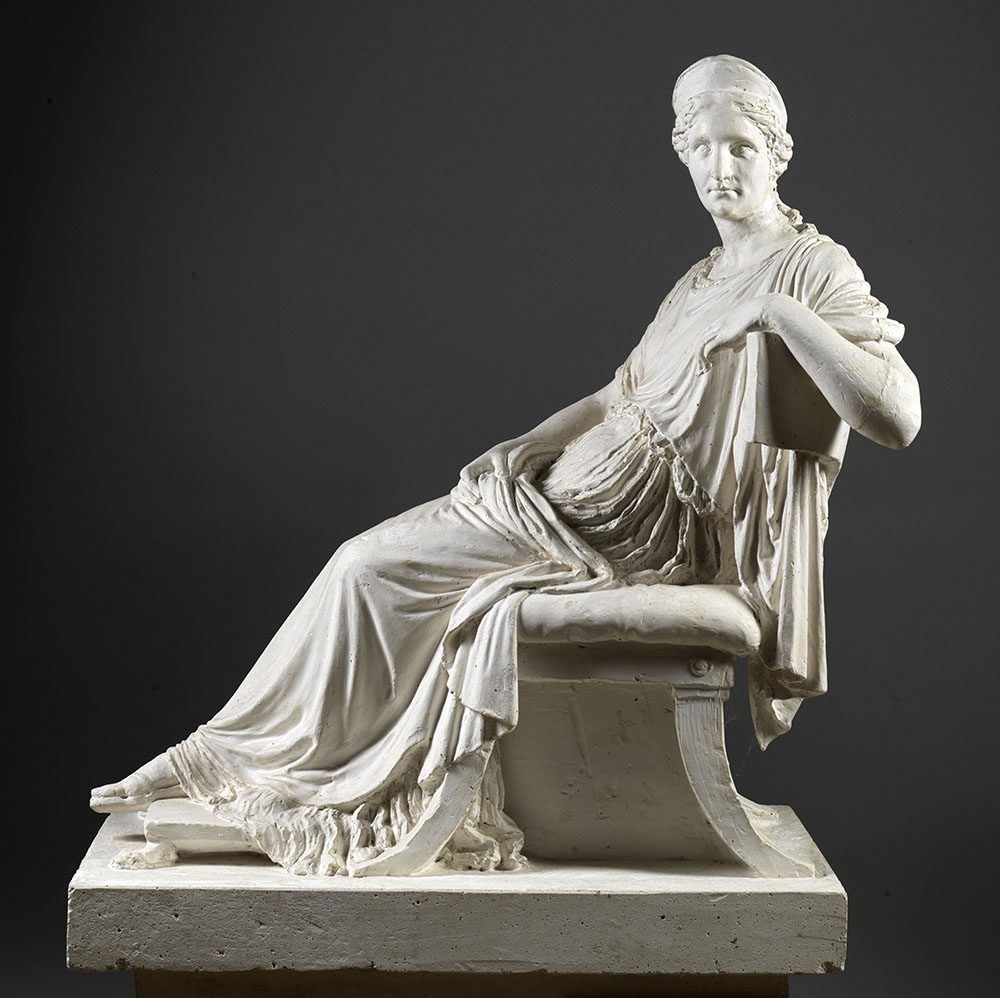
“Madame Mère”
(Letizia Ramolino Bonaparte)
Antonio Canova,1805/1807, marble, overall: 147 x 146.3 x 77 cm (57 7/8 x 57 9/16 x 30 5/16 in.)
The Devonshire Collections, Chatsworth © The Devonshire Collections, Chatsworth, reproduced by
permission of Chatsworth Settlement Trustees/Bridgeman Images
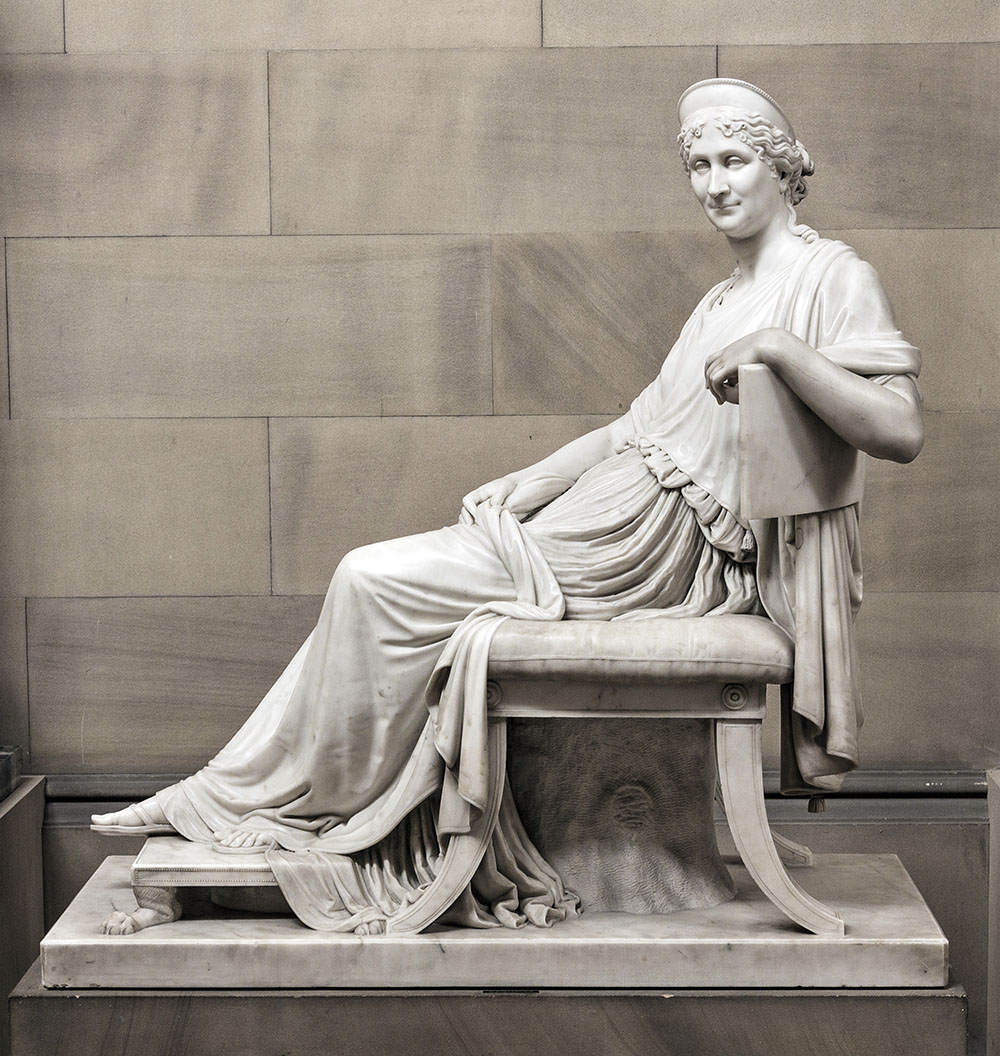
“Monument to Titian”
Antonio Canova, 1790/1795, terracotta, overall: 61 x 50 x 14 cm (24 x 19 11/16 x 5 1/2 in.)
Museo Gypsotheca Antonio Canova, Possagno. Photographed by Luigi Spina
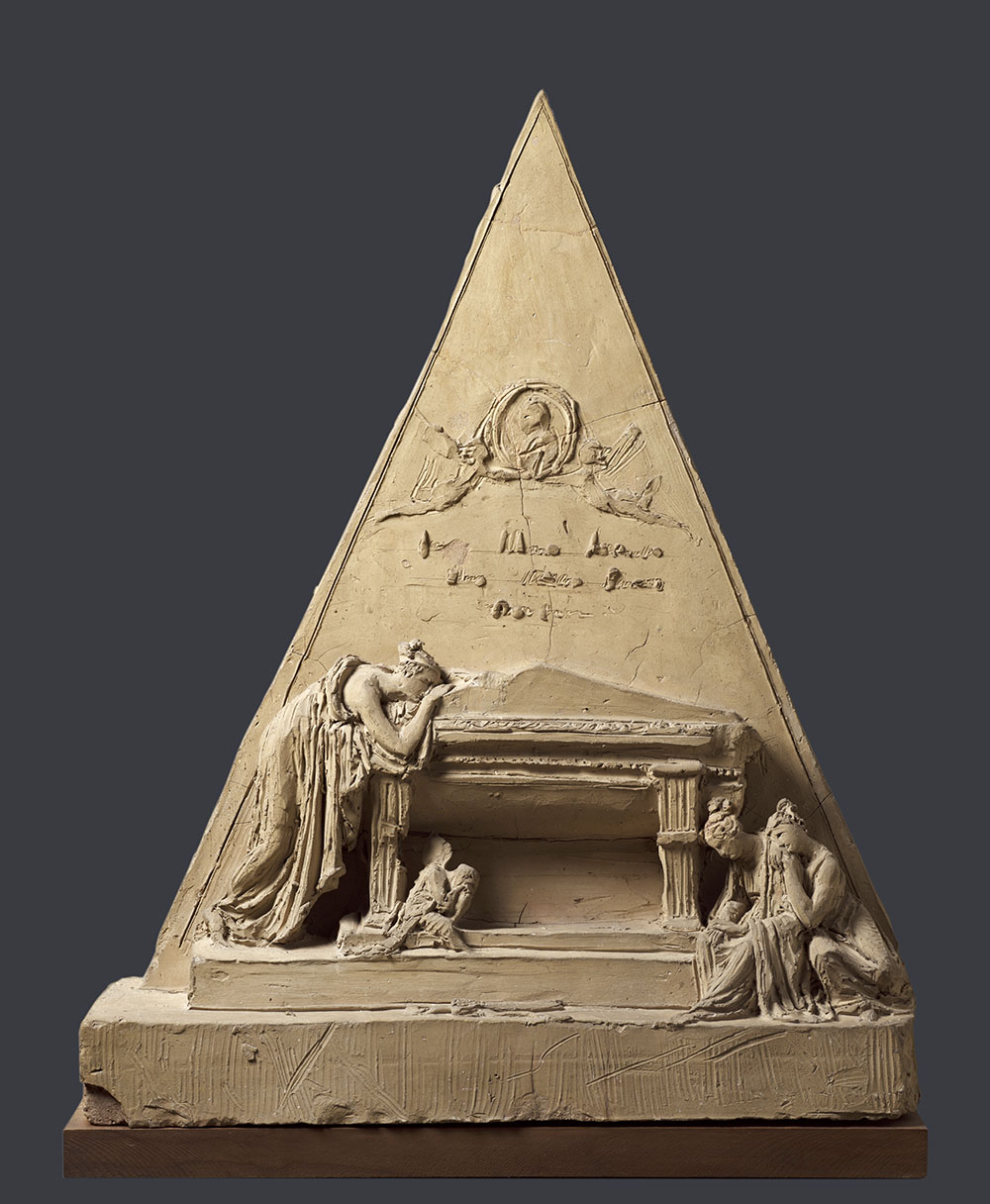
“Monument to Titian”
Antonio Canova, 1790/1795, terracotta, overall: 70 x 69 x 20.5 cm (27 9/16 x 27 3/16 x 8 1/16 in.)
Museo Gypsotheca Antonio Canova, Possagno. Photographed by Luigi Spina
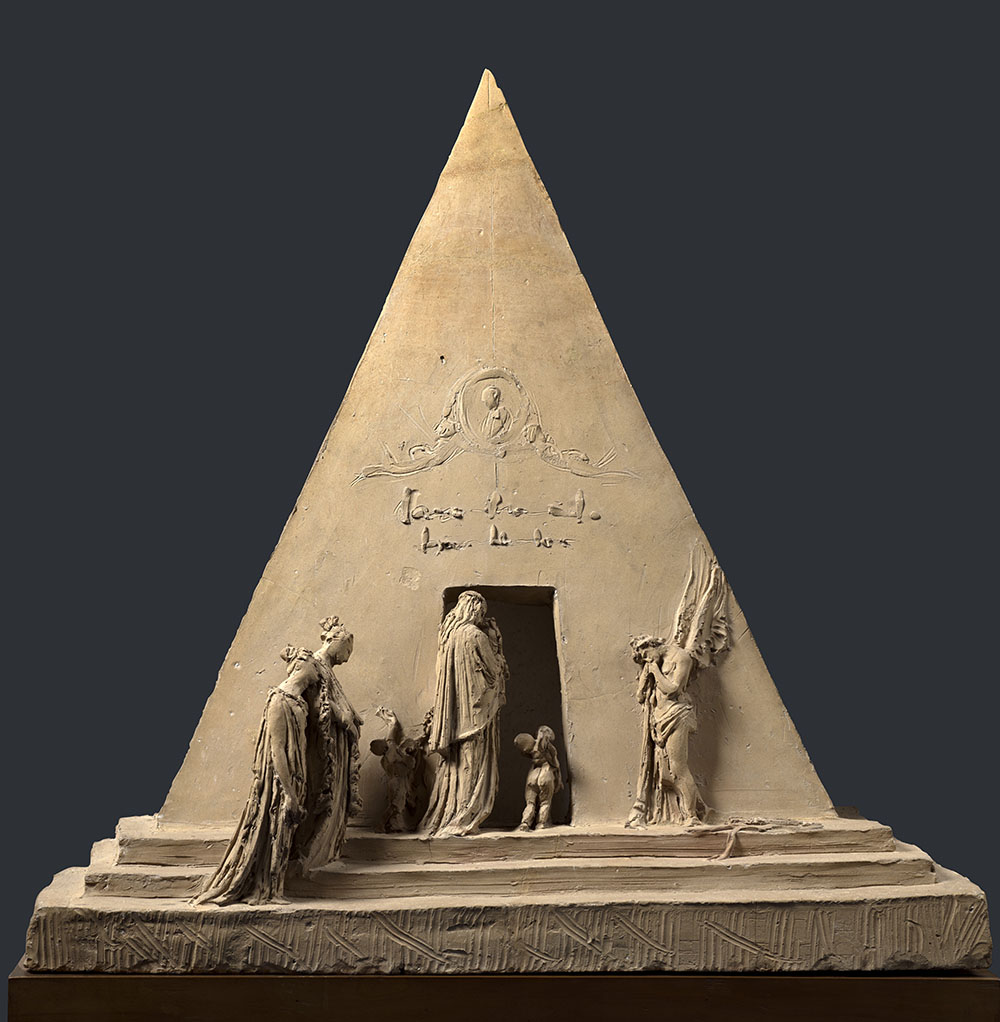
“Princess Leopoldina von Esterházy”
Antonio Canova, c.1805–1806, terracotta, overall: 40.5 x 30 x 17 cm (15 15/16 x 11 13/16 x 6 11/16 in.)
Museo Gypsotheca Antonio Canova, Possagno. Photographed by Luigi Spina
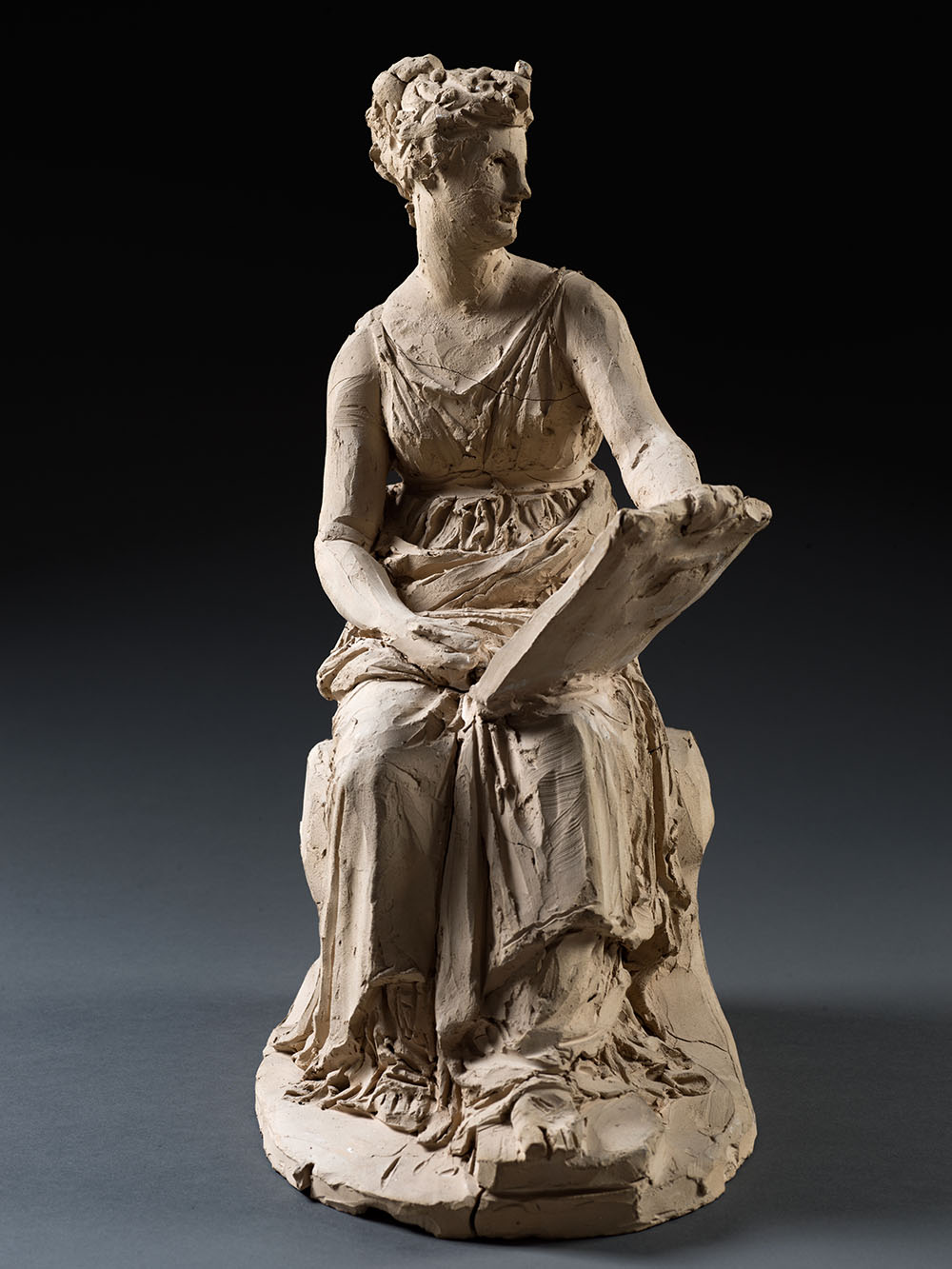
Detail of “Princess Leopoldina von Esterházy”
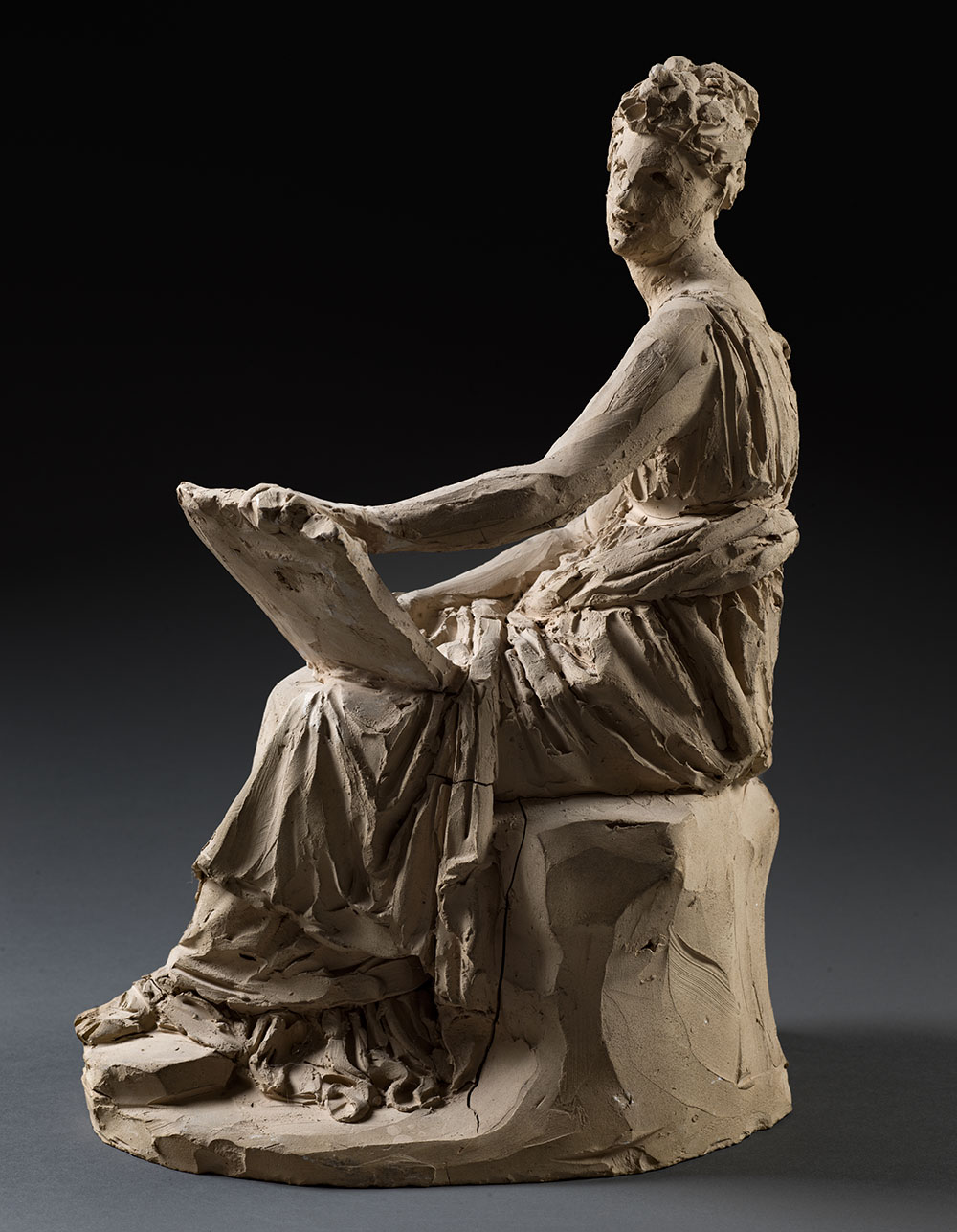
“Pope Clement XIV”
Antonio Canova, 1783, painted terracotta, overall: 45 x 40 x 24 cm (17 11/16 x 15 3/4 x 9 7/16 in.)
Museo Gypsotheca Antonio Canova, Possagno. Photographed by Luigi Spina

Detail of “Pope Clement XIV”
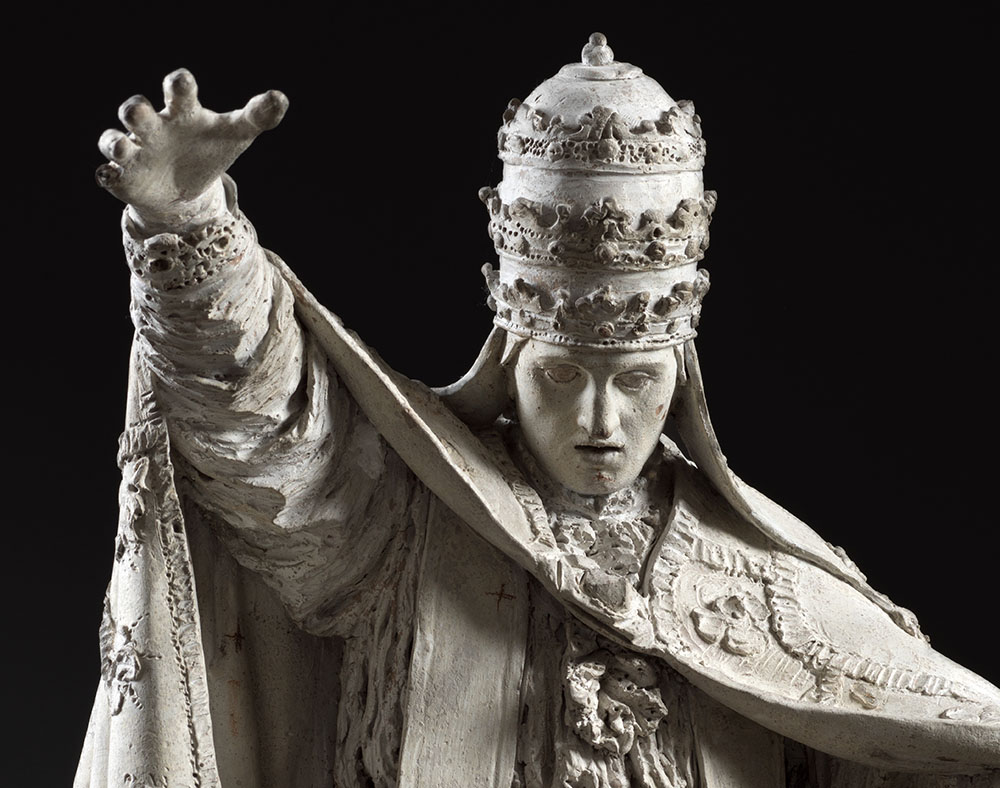
Canova’s studio in Rome
Francesco Chiaruttini, View of Antonio Canova’s Studio
in Rome, 1786, pen and wash, Civici Musei, Udine
Sketch models were usually placed on tables or shelves in an artist’s studio. In Canova’s workshop, they would have been visible to his assistants as well as anyone allowed to visit his study or any of the smaller, more private spaces—those rooms where he was most likely to keep intimate objects like small models.
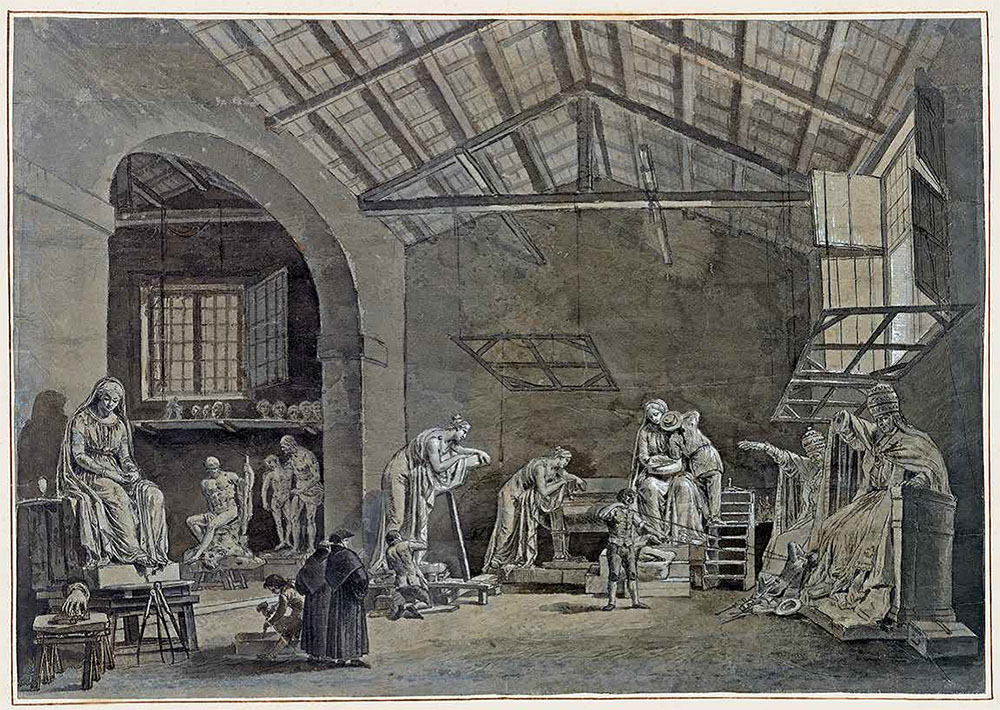
“George Washington”
Antonio Canova, c.1817–1818, plaster, overall: 50 x 30 x 47 cm (19 11/16 x 11 13/16 x 18 1/2 in.)
Museo Gypsotheca Antonio Canova, Possagno. Photographed by Luigi Spina

“Allegory of Peace”
Antonio Canova, c. 1811–1814, plaster, overall: 73 x 27 x 24 cm (28 3/4 x 10 5/8 x 9 7/16 in.)
Museo Gypsotheca Antonio Canova, Possagno. Photographed by Luigi Spina
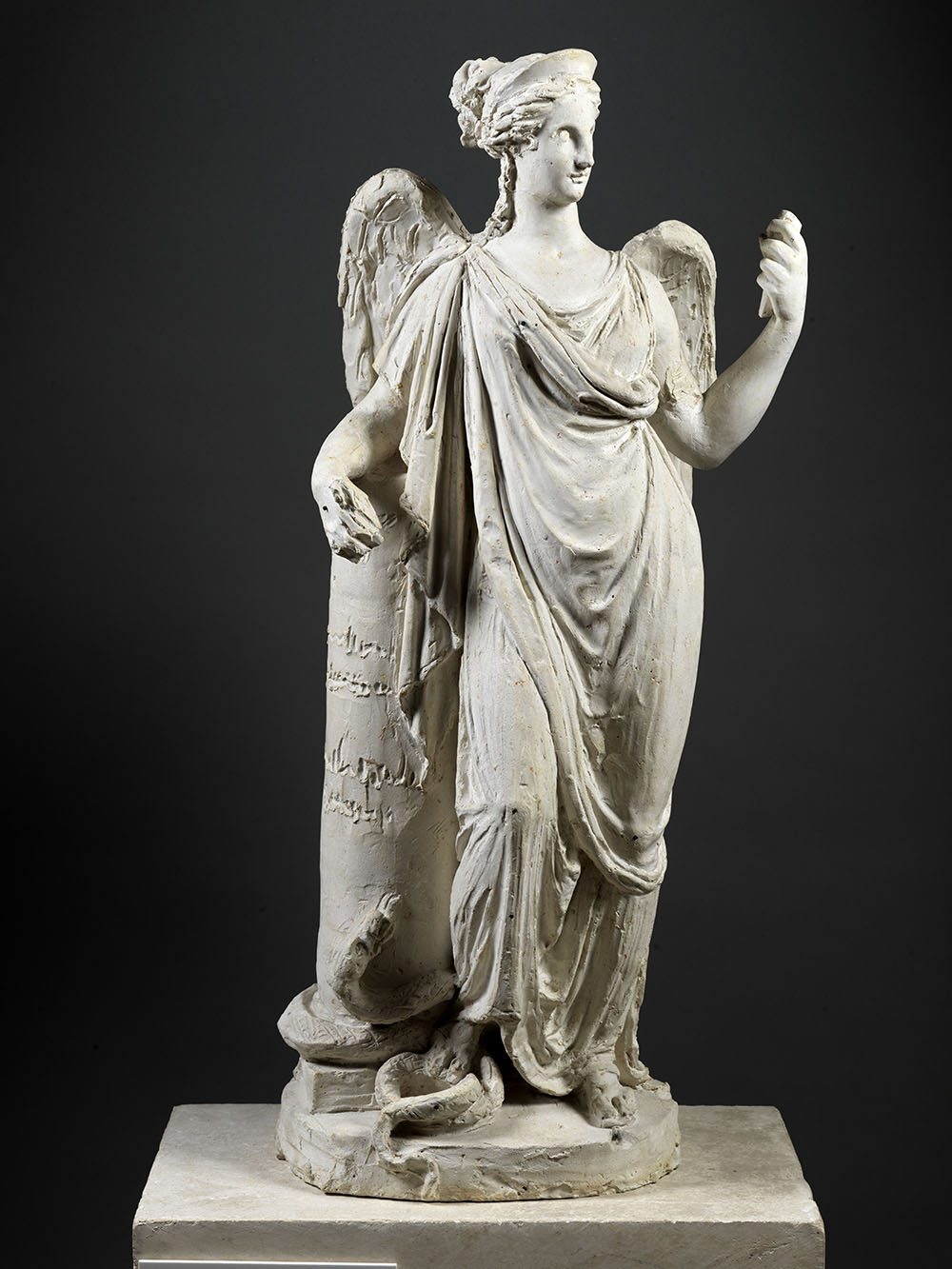
“Terpsichore Lyran” (Muse of Lyric Poetry)
Antonio Canova, c. 1814–1816, marble, overall: 177.5 x 78.1 x 61 cm (69 7/8 x 30 3/4 x 24 in.)
The Cleveland Museum of Art, Leonard C. Hanna, Jr. Fund 1968.212
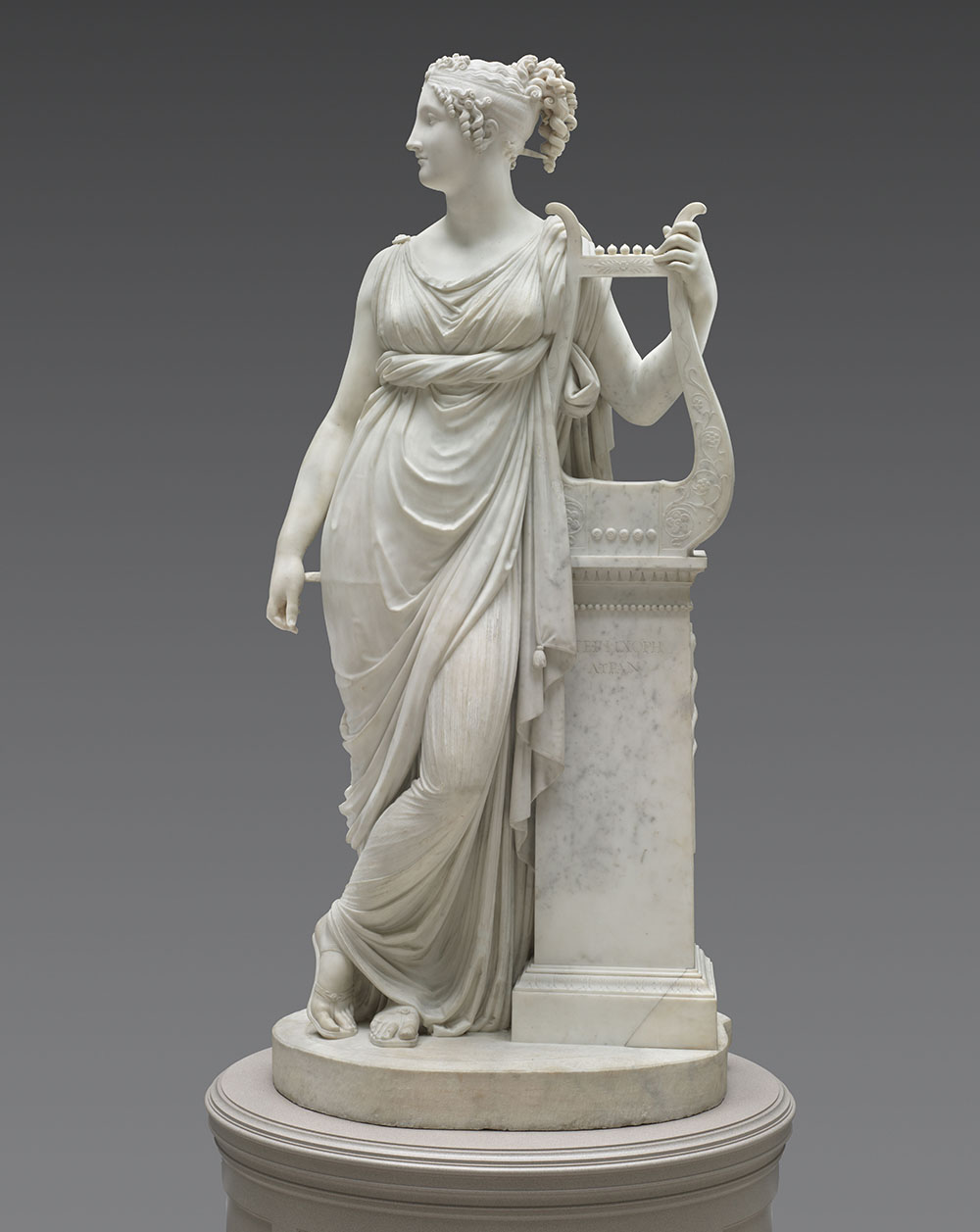
“Venus”
after Antonio Canova, model 1817/1820
carved c. 1822/1823, marble, overall: 175.26 x 50.8 x 45.72 cm (69 x 20 x 18 in.)
National Gallery of Art, Washington, Corcoran Collection (William A. Clark Collection)
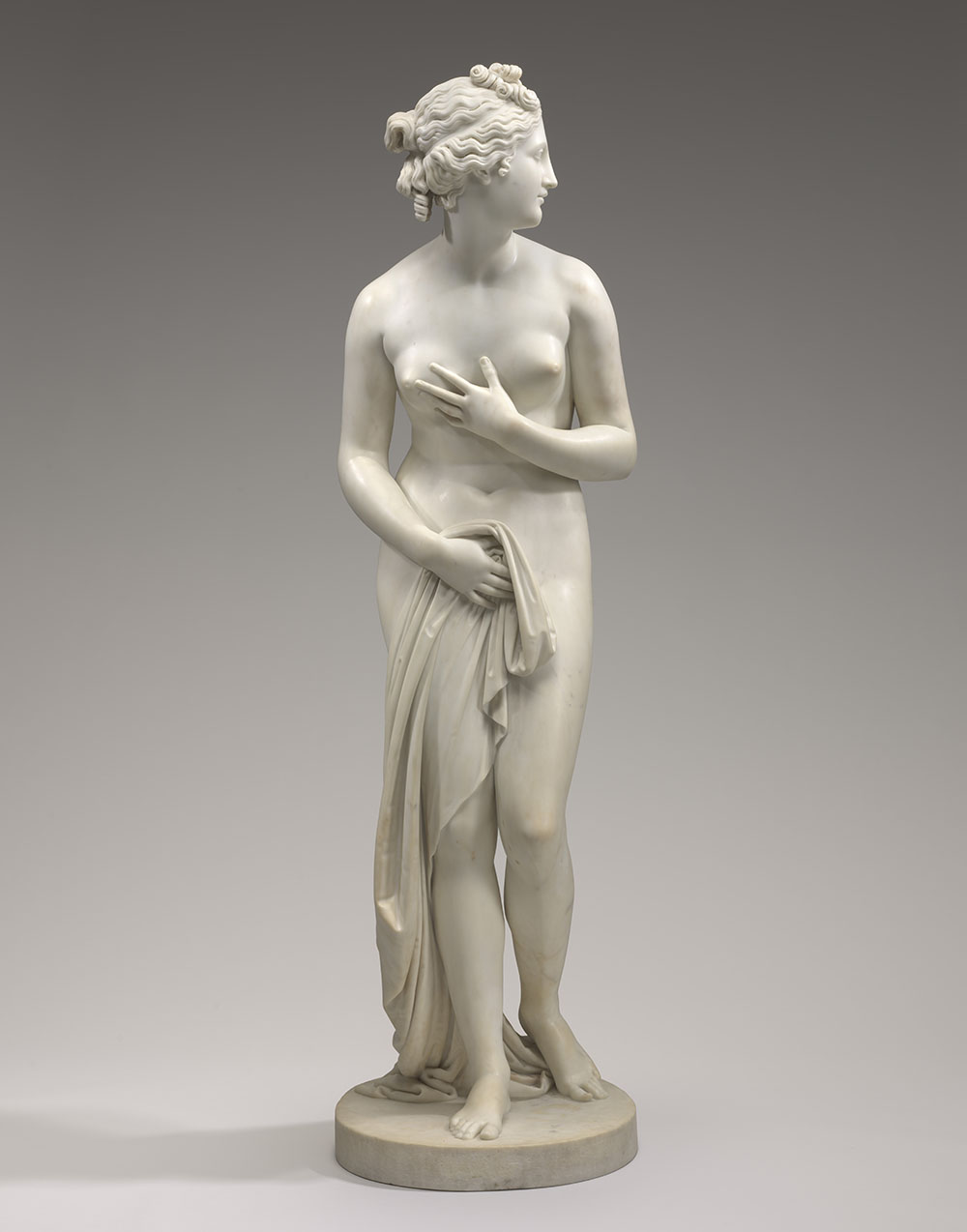
Detail of “Venus”
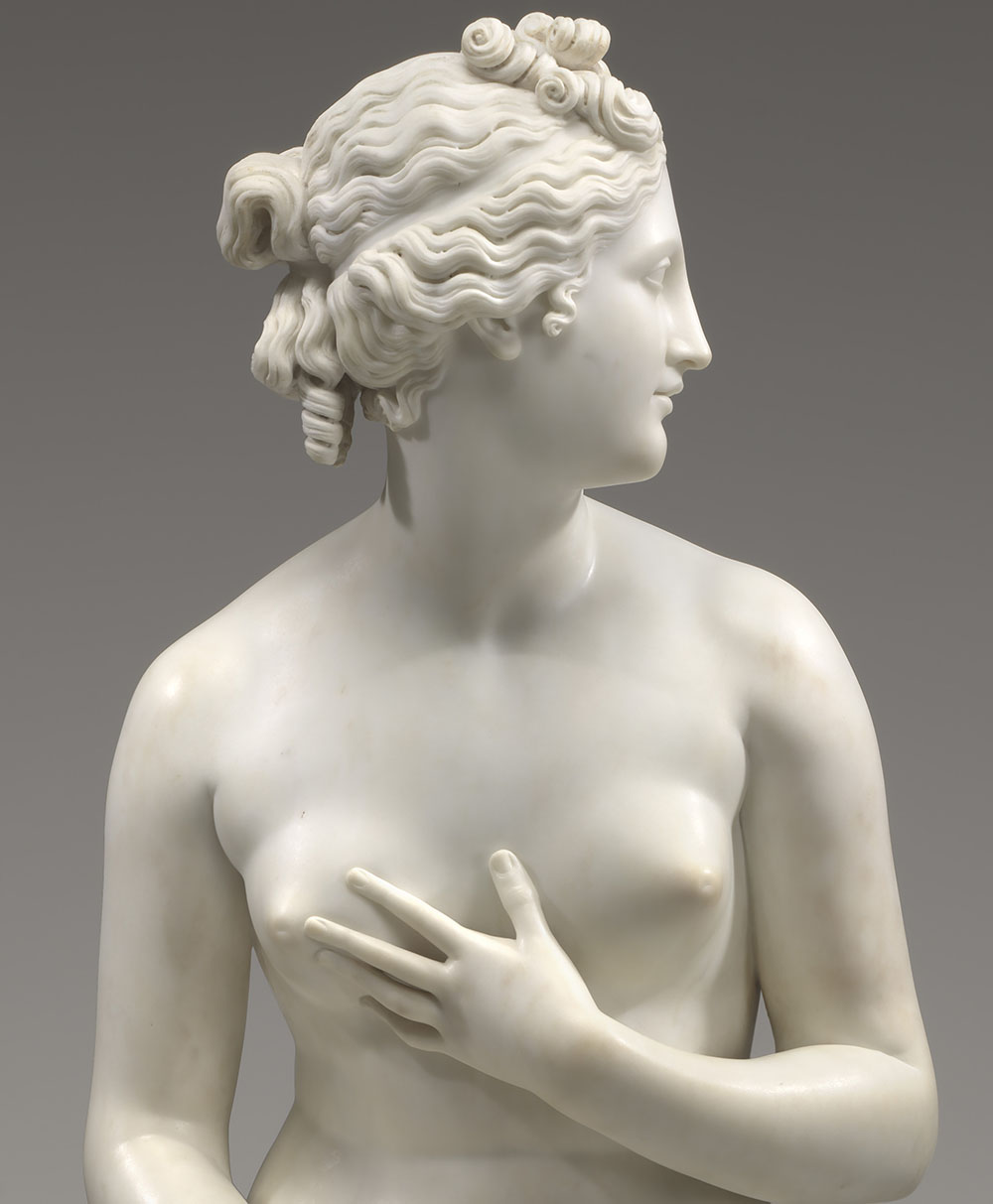
PORTRAITS
“Doge Paolo Renier”
Antonio Canova, 1779, terracotta, overall: 80 x 54 x 22 cm (31 1/2 x 21 1/4 x 8 11/16 in.)
Museo Bottacin – Musei Civici, Padua. Photographed by Luigi Spina
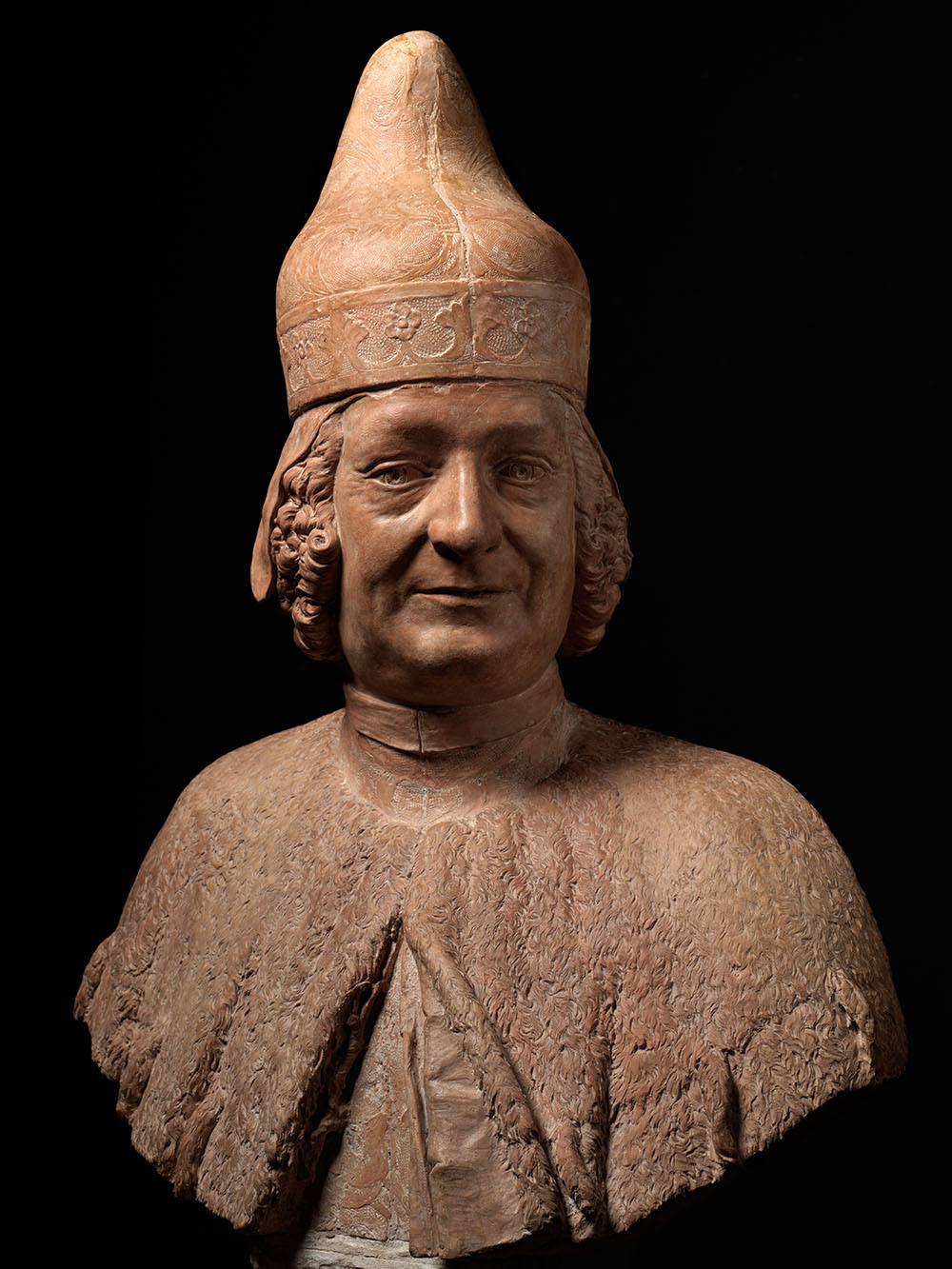
Detail of “Doge Paolo Renier”
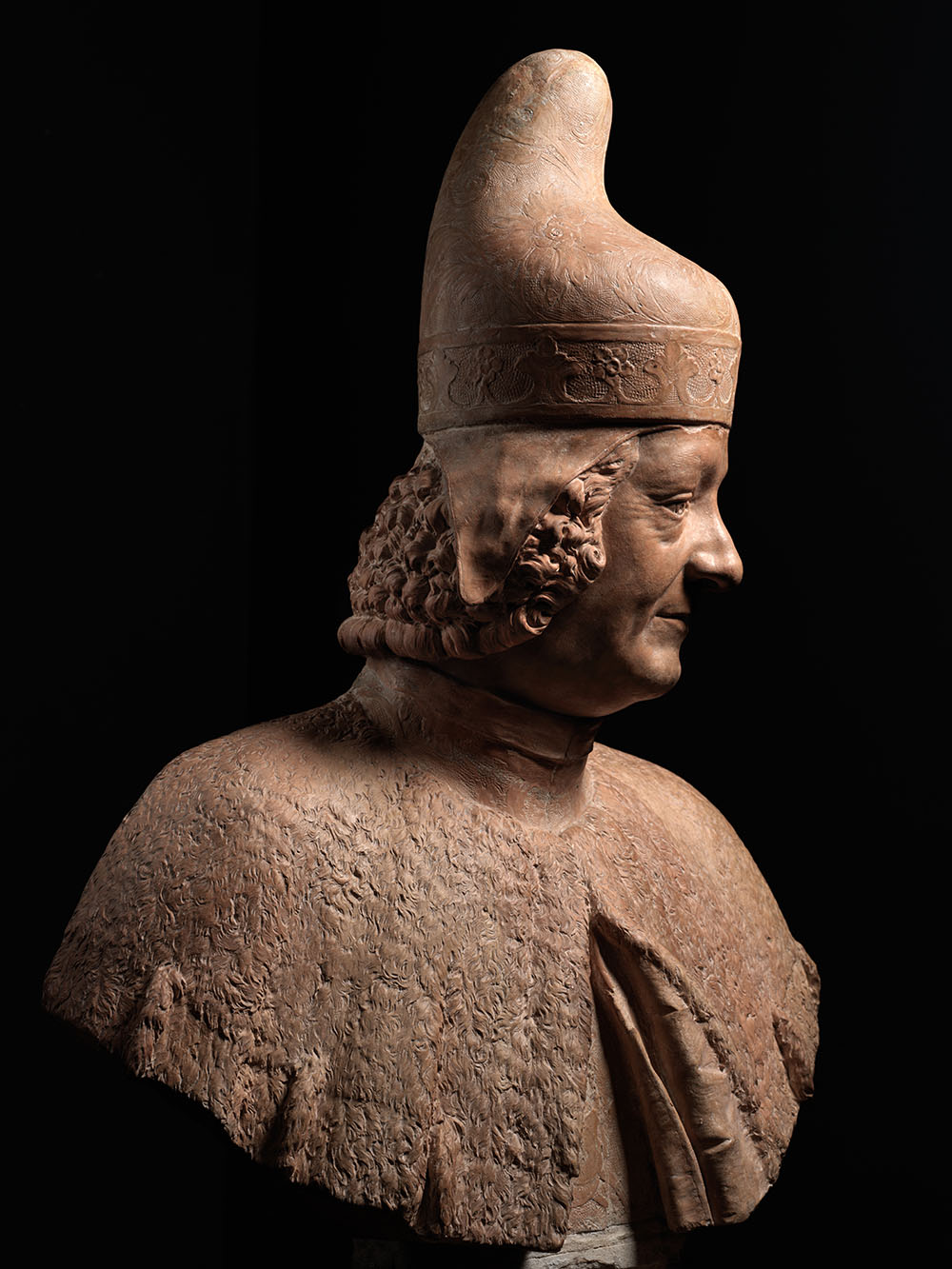
“Study of a Boy”
Antonio Canova, c.1790–1800, terracotta, overall: 39 x 38 x 16 cm (15 3/8 x 14 15/16 x 6 5/16 in.)
Museo Gypsotheca Antonio Canova, Possagno. Photographed by Luigi Spina
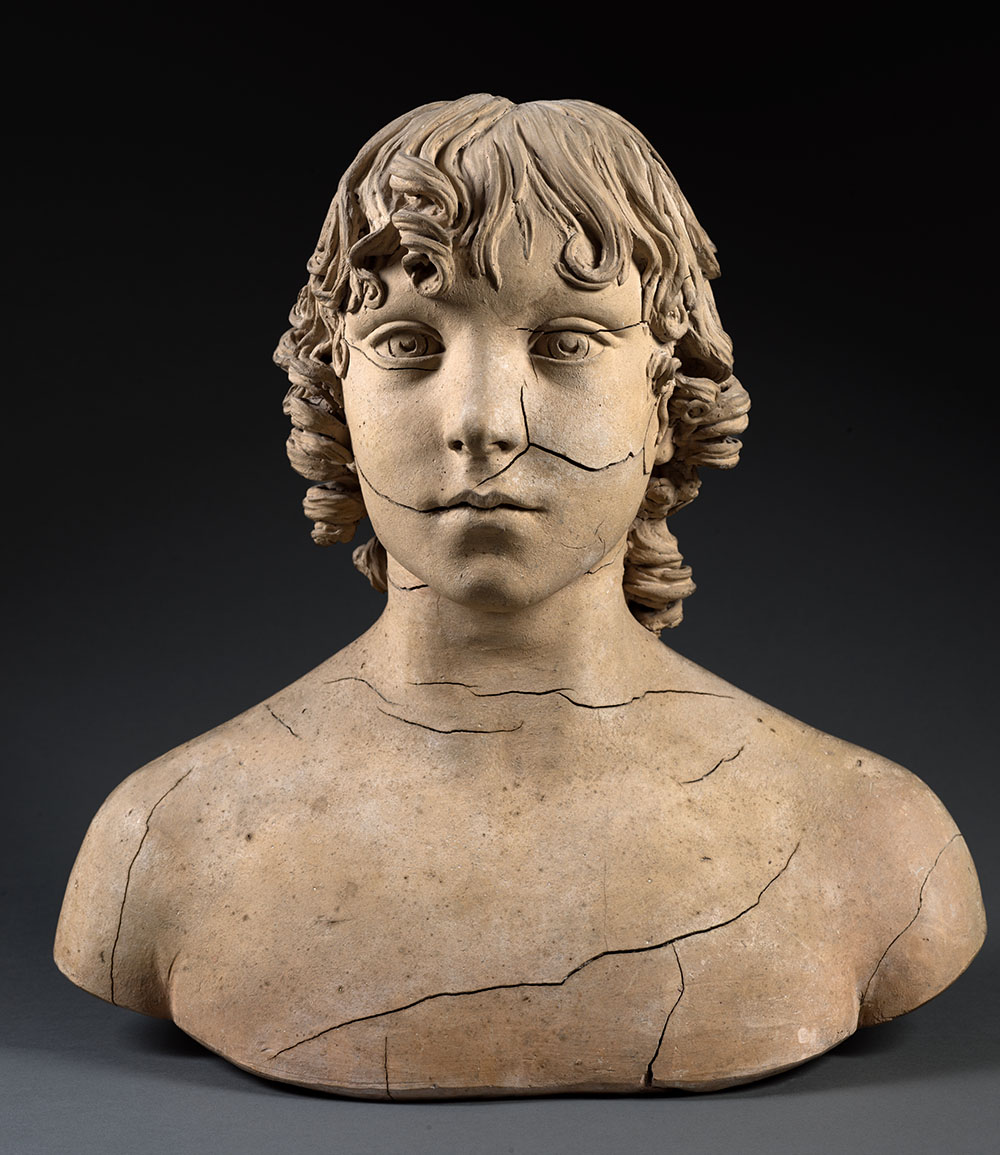
Detail of “Study of a Boy”
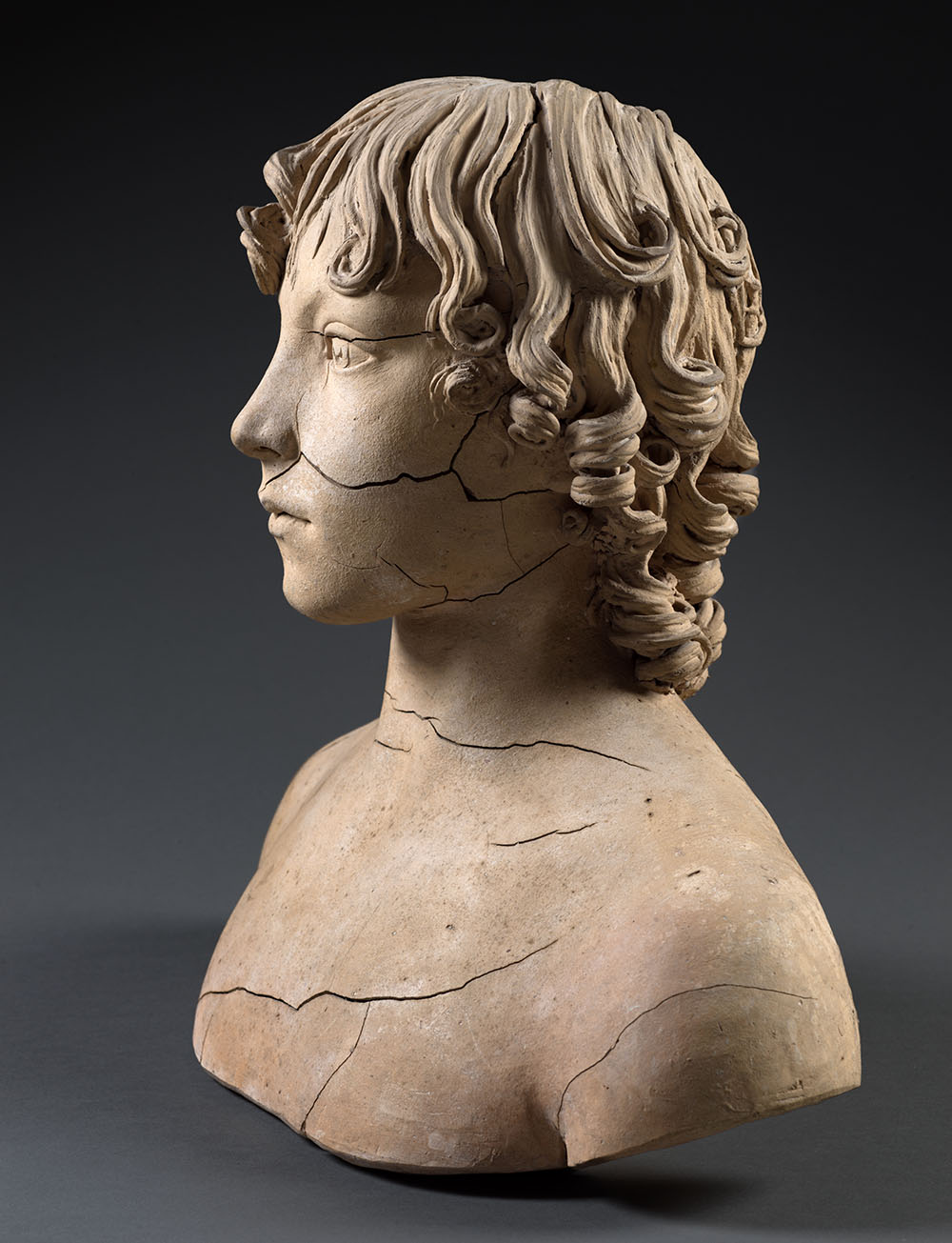
Detail of “Study of a Boy”
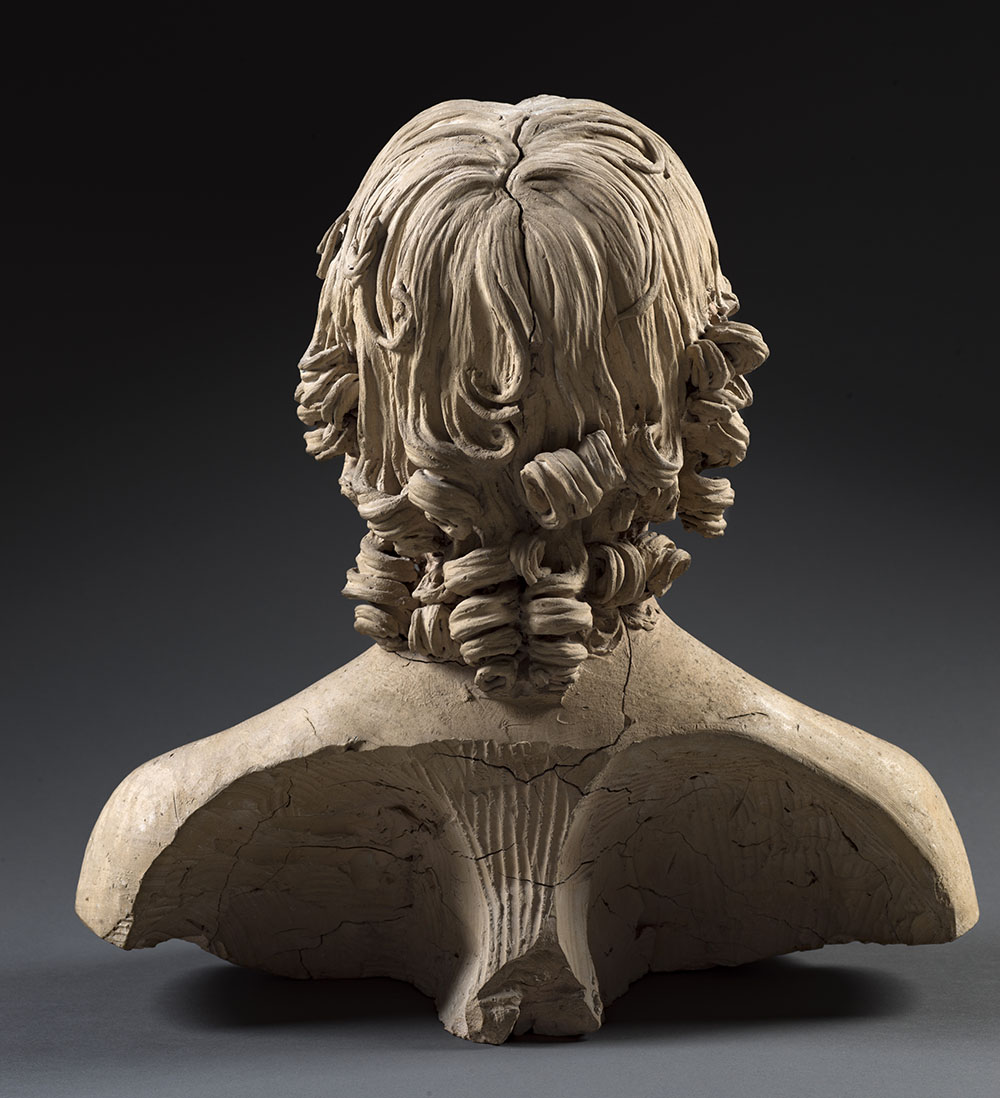
“Character Head”
Antonio Canova, c. 1780, terracotta, overall without base: 9 x 6.5 x 6 cm (3 9/16 x 2 9/16 x 2 3/8 in.)
overall with base: 15 x 7 x 6 cm (5 7/8 x 2 3/4 x 2 3/8 in.) Dino and Raffaello Tomasso

“Head of Medusa”
Antonio Canova, c.1797–1800, terracotta, overall: 31 x 36 x 30 cm (12 3/16 x 14 3/16 x 11 13/16 in.)
Museo Gypsotheca Antonio Canova, Possagno. Photographed by Luigi Spina
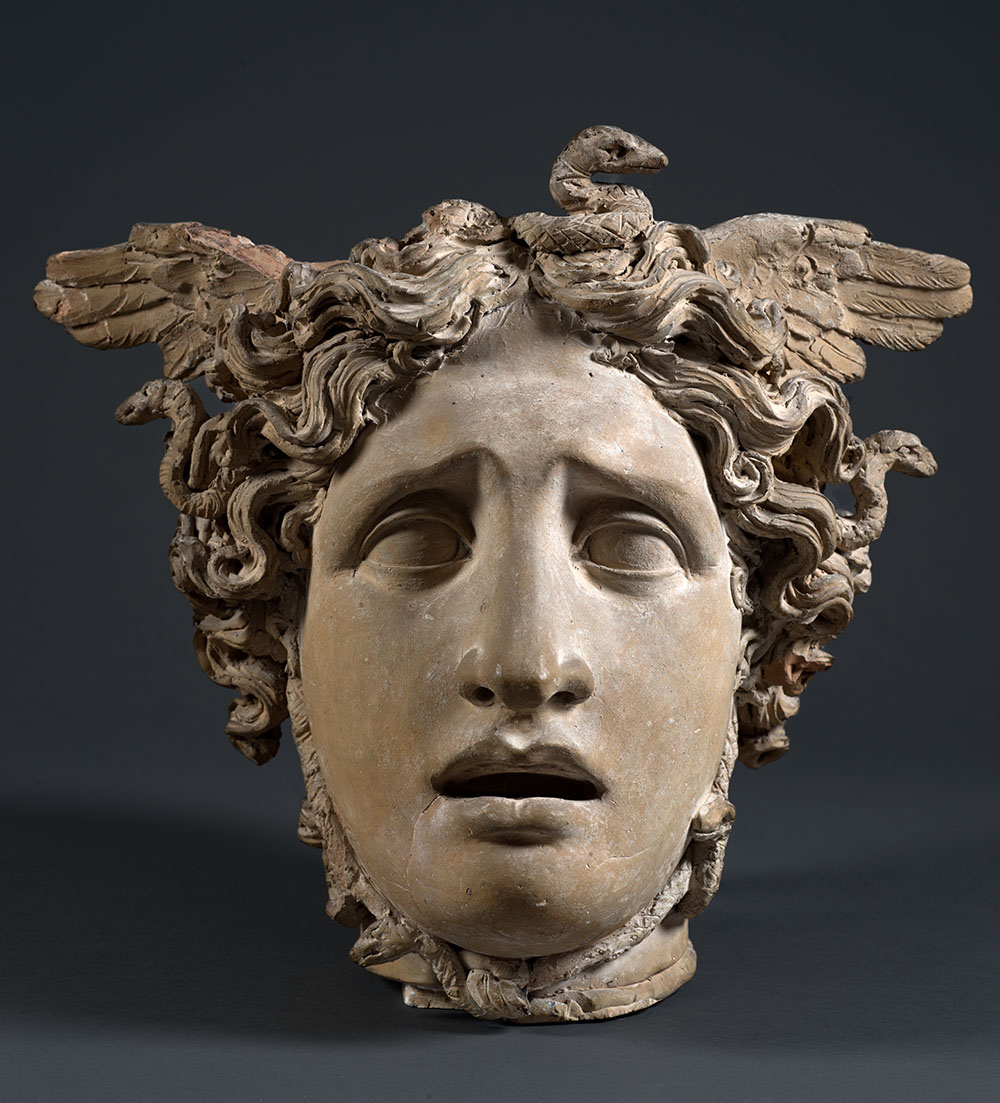
Detail of “Head of Medusa”
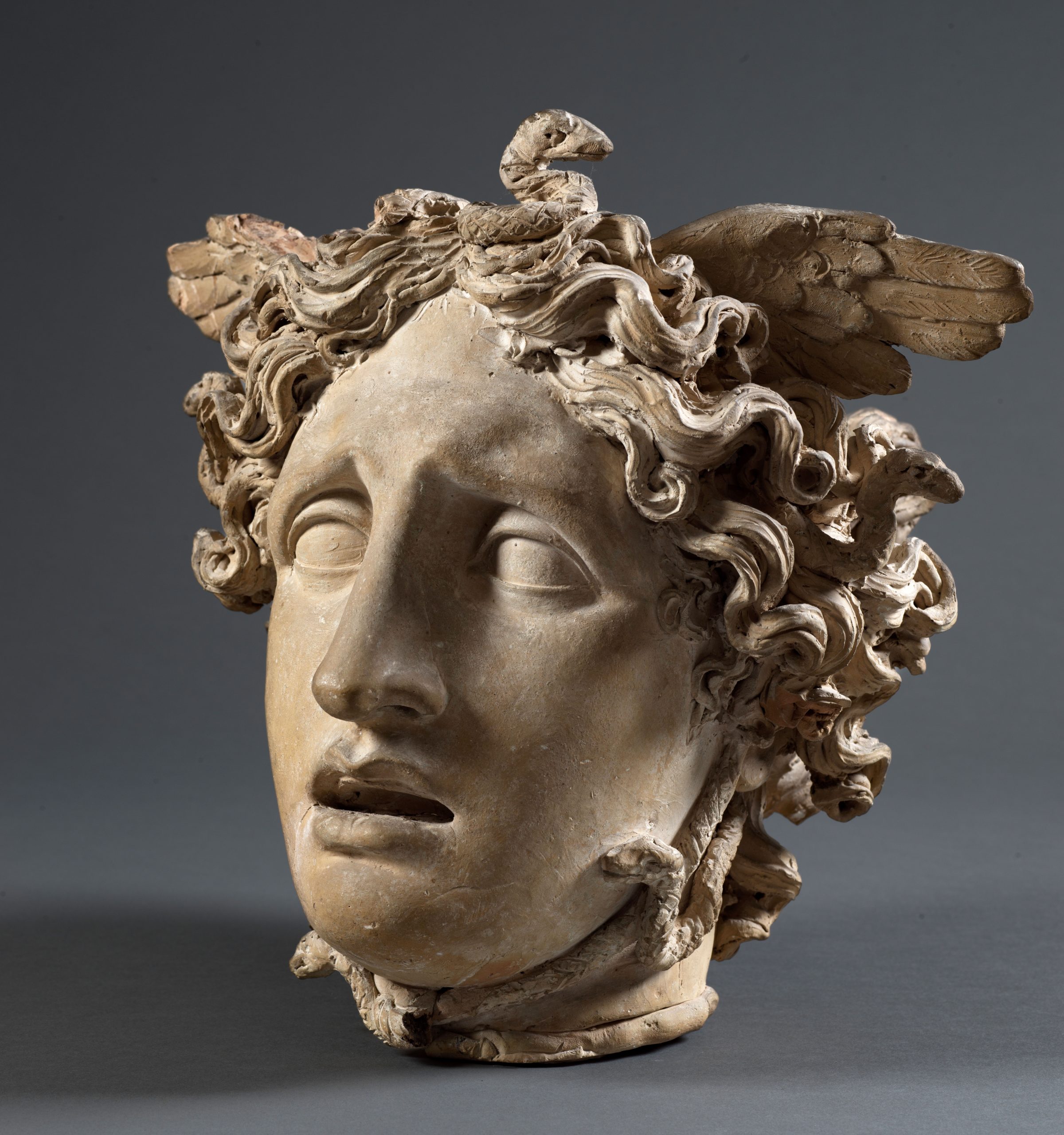
STATEMENTS
By the Curators C. D. Dickerson III and Emerson Bowyer
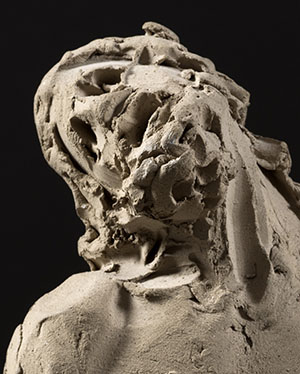 “While marble is the material to which his professional reputation has always been tied, the clay models he produced en route to those marbles reveal a completely different side of his creative self”. “Made rapidly, with one quickly following another as he developed his ideas in clay, these sketches could not be more gestural or further removed from his exquisitely refined marbles”.
“While marble is the material to which his professional reputation has always been tied, the clay models he produced en route to those marbles reveal a completely different side of his creative self”. “Made rapidly, with one quickly following another as he developed his ideas in clay, these sketches could not be more gestural or further removed from his exquisitely refined marbles”.
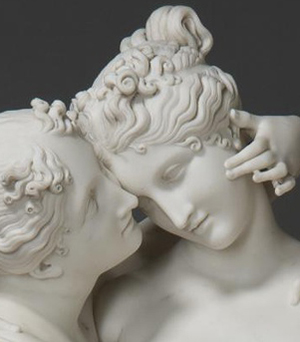 “Widely admired for embodying an ideal of beauty unrivaled since ancient Greece, his statues were praised for their lifelikeness, especially in the way he could give cold, hard stone the appearance of warm, supple flesh. His treatment of surface was legendary”.
“Widely admired for embodying an ideal of beauty unrivaled since ancient Greece, his statues were praised for their lifelikeness, especially in the way he could give cold, hard stone the appearance of warm, supple flesh. His treatment of surface was legendary”.
“As his friend Leopoldo Cicognara described, Canova used “kisses and caresses” to wear down the surrounding marble as he worked to reveal a figure”.
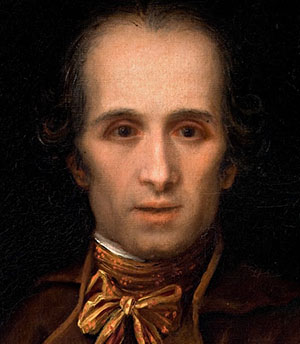 “One could always see him investing a passion for the object,” wrote, personal secretary to the elderly Canova, “with alterations to his physiognomy, with tears, with happiness, and with general convulsions of his body.” “In arguably his most famous statement about sketching, he recommended that artists “conceive with fire and execute with phlegm”—that they not hold back when recording first thoughts, only exercise control when finishing works. In 1768, shortly before dying, he elaborated on why he appreciated sketches so highly”.
“One could always see him investing a passion for the object,” wrote, personal secretary to the elderly Canova, “with alterations to his physiognomy, with tears, with happiness, and with general convulsions of his body.” “In arguably his most famous statement about sketching, he recommended that artists “conceive with fire and execute with phlegm”—that they not hold back when recording first thoughts, only exercise control when finishing works. In 1768, shortly before dying, he elaborated on why he appreciated sketches so highly”.
 “Canova could hardly have invented a process that drew a more direct line between clay and his finished marbles. It is almost as if he wished he could magically transmute his models straight into hard stone. Instead, he was forced to wrestle with the limitations imposed by pointing, the best system then available to sculptors for copying on a one-toone scale”.
“Canova could hardly have invented a process that drew a more direct line between clay and his finished marbles. It is almost as if he wished he could magically transmute his models straight into hard stone. Instead, he was forced to wrestle with the limitations imposed by pointing, the best system then available to sculptors for copying on a one-toone scale”.
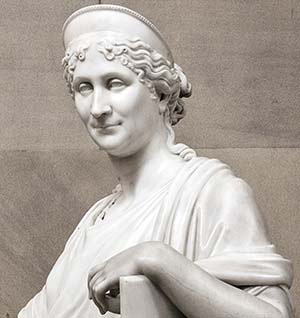 “Canova masterfully distinguished between different elements of costume and seemingly reveled in the distinctions between flesh and fabric. Her torso, for example, displays multiple finishing techniques. A crisply detailed and polished pin at the shoulders clasps the chiton, which was carved in vibrating parallel rivulets to produce thin shadowed stripes”.
“Canova masterfully distinguished between different elements of costume and seemingly reveled in the distinctions between flesh and fabric. Her torso, for example, displays multiple finishing techniques. A crisply detailed and polished pin at the shoulders clasps the chiton, which was carved in vibrating parallel rivulets to produce thin shadowed stripes”.
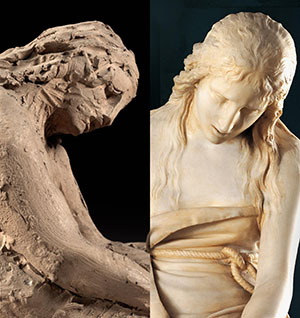 “What, ultimately, was the relationship between Canova’s work in clay and marble?
“What, ultimately, was the relationship between Canova’s work in clay and marble?
The two materials could not be more different. One soft, the other hard; one matte and opaque, the other offering more complex lighting effects; one enabling an additive and comparatively quick process, the other subtractive and necessarily more laborious. Clay and marble were the alpha and omega of the sculptor’s practice”.
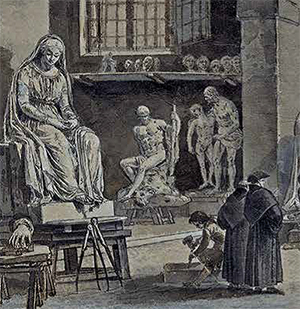 What is more, he almost never parted with his working models, regarding them as an important component of his studio. Throughout his career, he preserved his sketches in the private spaces of his workshop as records of evolving forms that would be realized in marble, and as a wellspring of inspiration and sculptural experimentation.
What is more, he almost never parted with his working models, regarding them as an important component of his studio. Throughout his career, he preserved his sketches in the private spaces of his workshop as records of evolving forms that would be realized in marble, and as a wellspring of inspiration and sculptural experimentation.
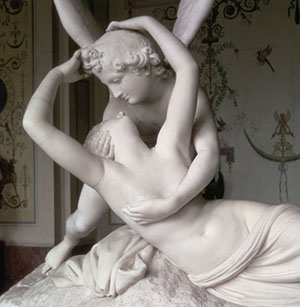 “By his fifties he could boast of having carved two of the most iconic works in the history of sculpture: Psyche Revived by Cupid’s Kiss for the British aristocrat Colonel John Campbell and The Three Graces for Empress Josephine Bonaparte”.
“By his fifties he could boast of having carved two of the most iconic works in the history of sculpture: Psyche Revived by Cupid’s Kiss for the British aristocrat Colonel John Campbell and The Three Graces for Empress Josephine Bonaparte”.
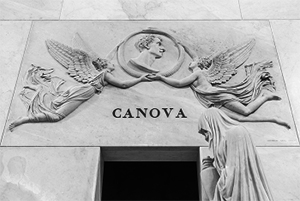 “Canova remains the only sculptor in history who was commemorated with a monument during his lifetime”.
“Canova remains the only sculptor in history who was commemorated with a monument during his lifetime”.
By Kaywin Feldman, director of the National Gallery of Art
 “While his professional reputation has always been tied to marble, Antonio Canova’s clay models reveal a bold and more expressionistic side to his creative identity,”
“While his professional reputation has always been tied to marble, Antonio Canova’s clay models reveal a bold and more expressionistic side to his creative identity,”
“I would like to thank our lenders for their willingness to share their treasured works of art, enabling us to present Canova’s works together”.
“This project would not have been possible without the generosity of the Museo Gypsotheca Antonio Canova in Possagno, where his studio effects—including 36 terracottas—were moved after the artist’s death.”
EXHIBITION CURATORS
The exhibition is curated by C. D. Dickerson III, senior curator of European and American art, National Gallery of Art, and Emerson Bowyer, Searle Curator, Painting and Sculpture of Europe, the Art Institute of Chicago.
EXHIBITION ORGANIZATION AND SUPPORT
The exhibition is organized by the National Gallery of Art, Washington,
and the Art Institute of Chicago.
Major support is provided by the Annenberg Fund for the International Exchange of Art.
Additional support is provided by the Embassy of Italy.
Under the patronage of the National Committee for the Celebration of the Bicentenary of the Death of Antonio Canova, Ministry of Culture, Rome.
CATALOGUE
 Publication date: June 6, 2023
Publication date: June 6, 2023
Authors: C.D. Dickerson III, Emerson Bowyer
and Anthony Sigel
Publisher: National Gallery Washington (June 6, 2023)
Language: English
Hardcover: 280 pages
ISBN-10: 0300269757
ISBN-13: 978-0300269758
Item Weight: 1.74 pounds
$65.00
Published by the National Gallery of Art in association with the Art Institute of Chicago and distributed by Yale University Press, this 280-page illustrated volume with new photography by Luigi Spina explores how and why Canova created clay models. It is the first monograph devoted entirely to the brilliantly expressive clay models that he made in preparation for his idealized and sensual sculptures in marble.
Extensive technical research of about 40 of the 60 or so terracotta models that survive was carried out in conjunction with this exhibition. Findings reveal the steps Canova took in making his models, as well as the tool marks or modeling gestures that distinguish his style.
The authors, with expertise in art history and conservation, focus on Canova’s terracottas, examining his techniques in modeling and in scaling them up to full-size copies that his assistants could reproduce in marble, as well as his practice of gifting them to friends.
NATIONAL GALLERY OF ART
https://www.nga.gov/ 6th St and Constitution Ave NW